

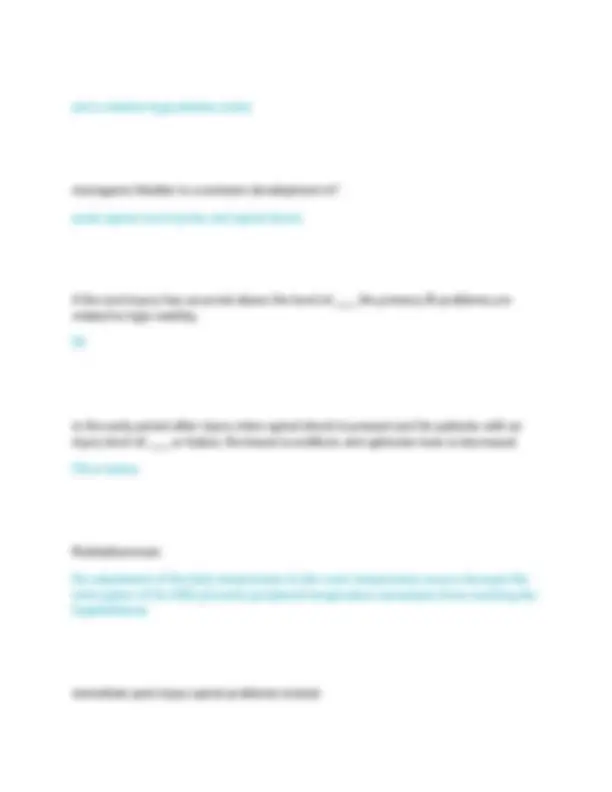


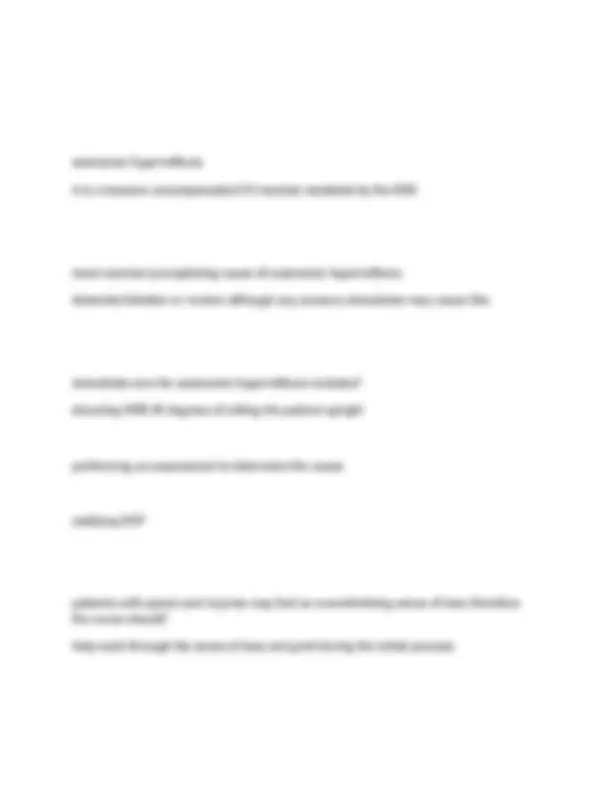
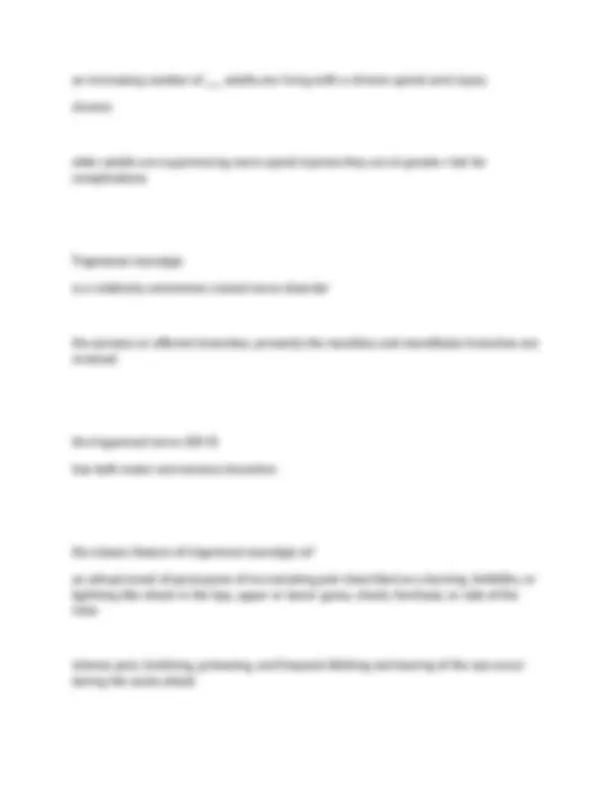
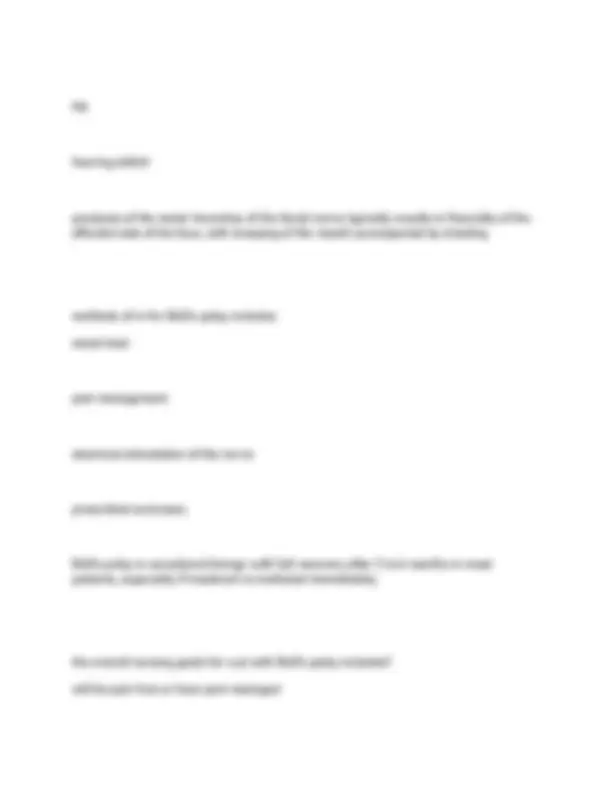
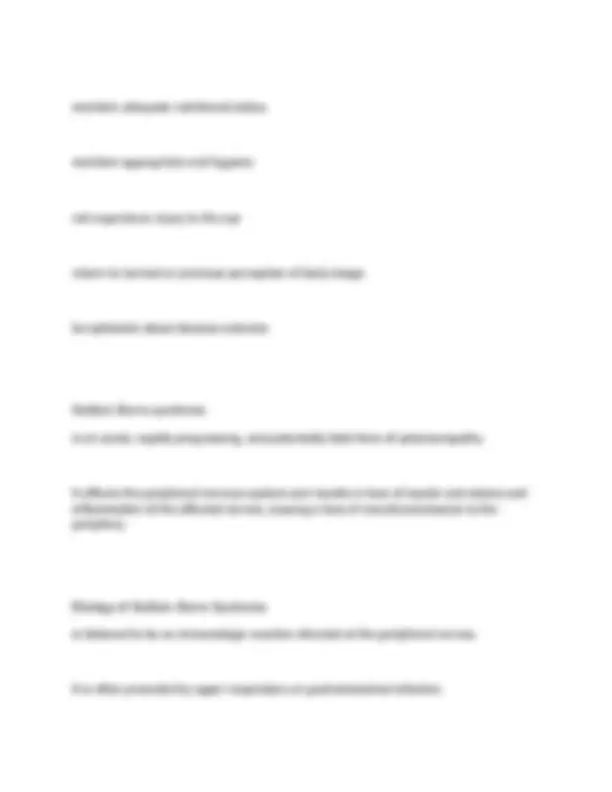
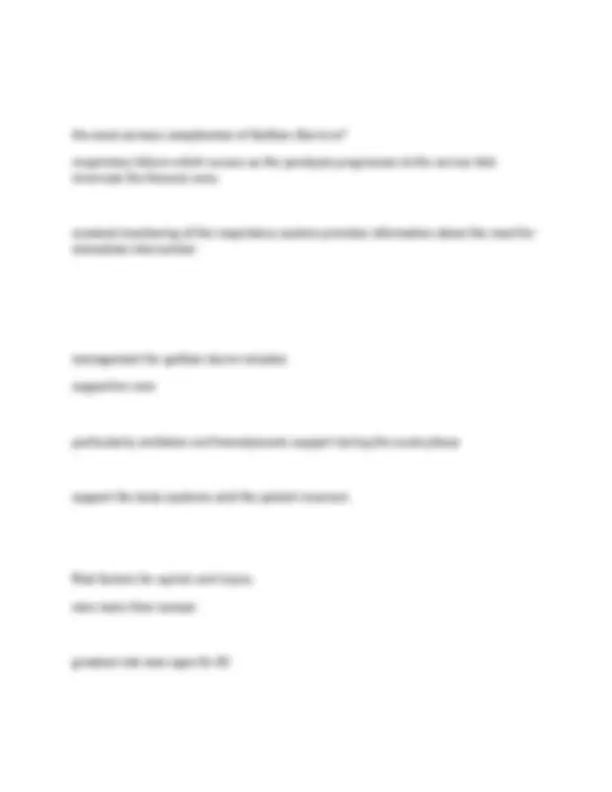
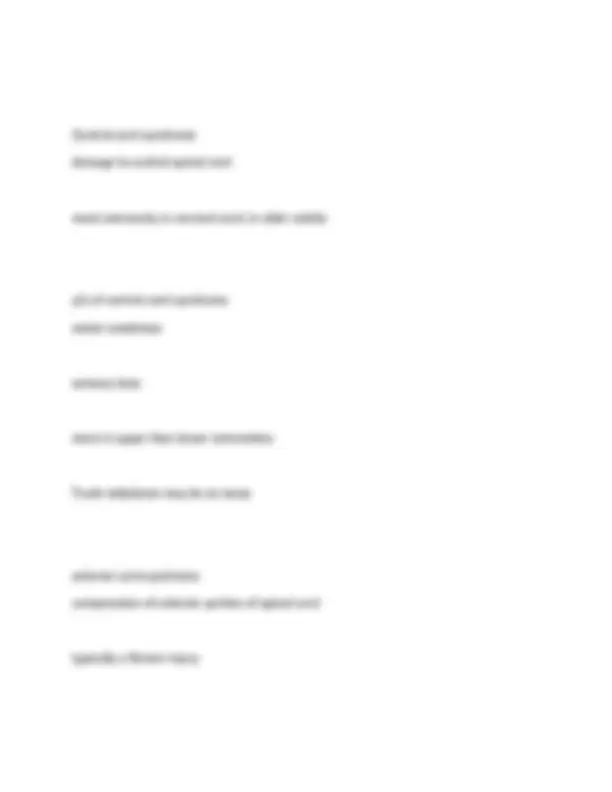
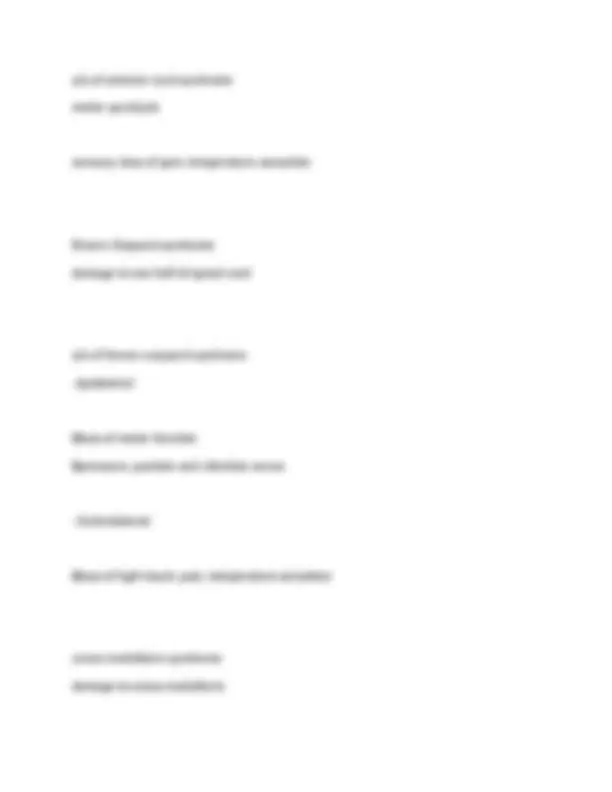
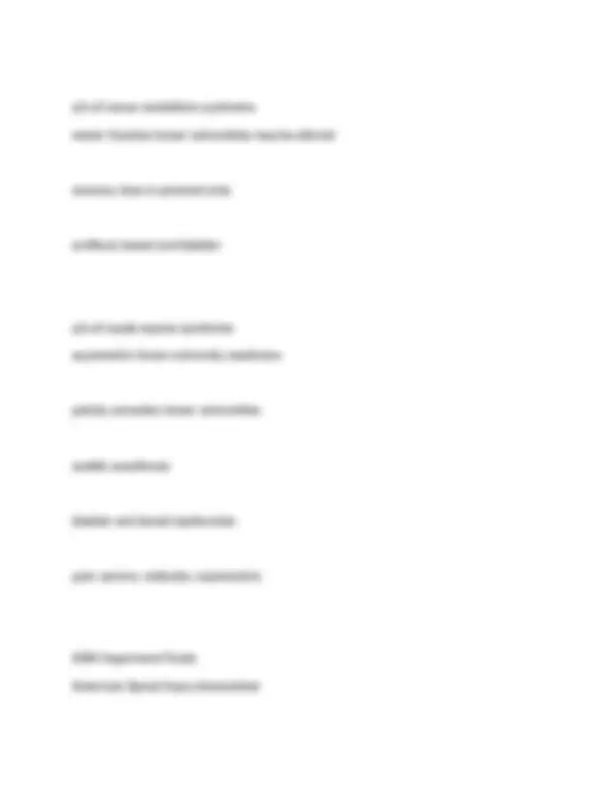
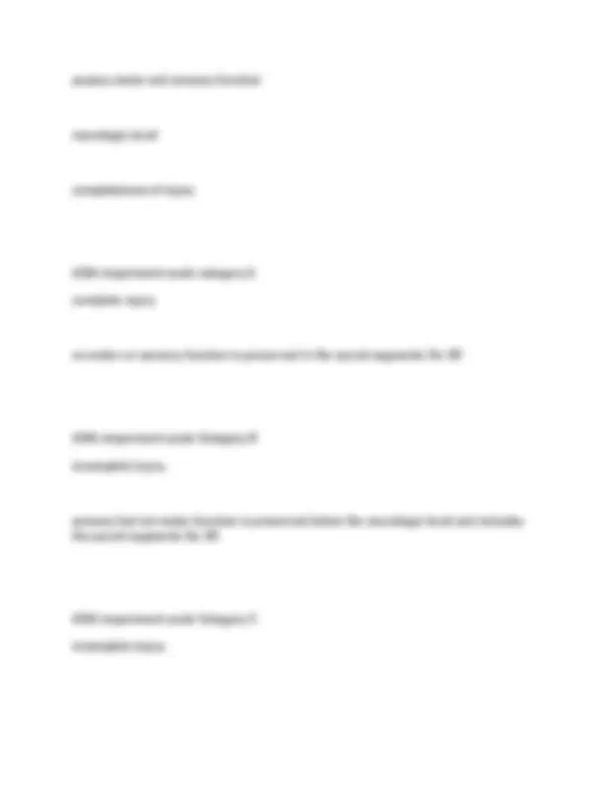
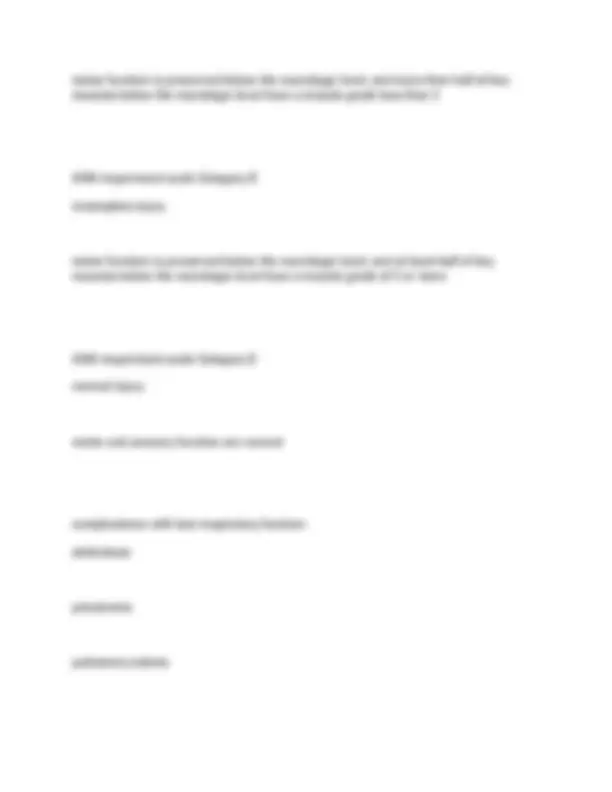
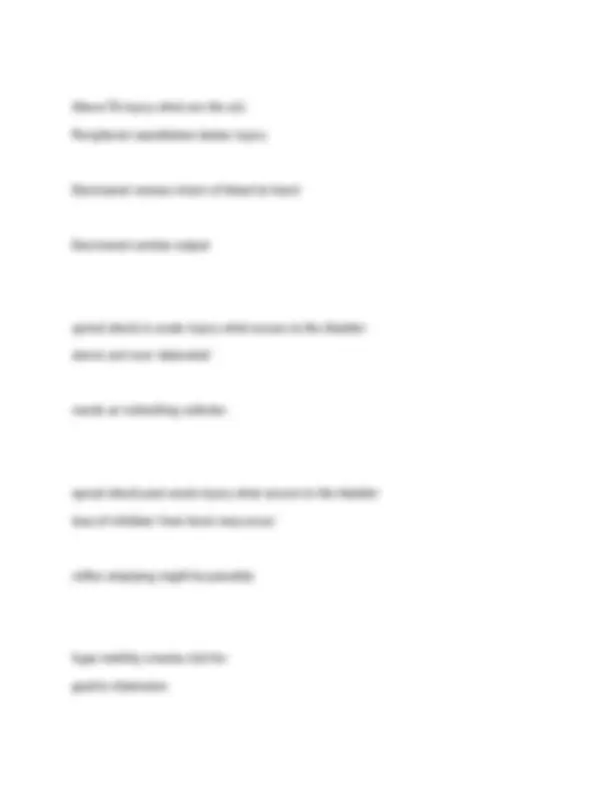
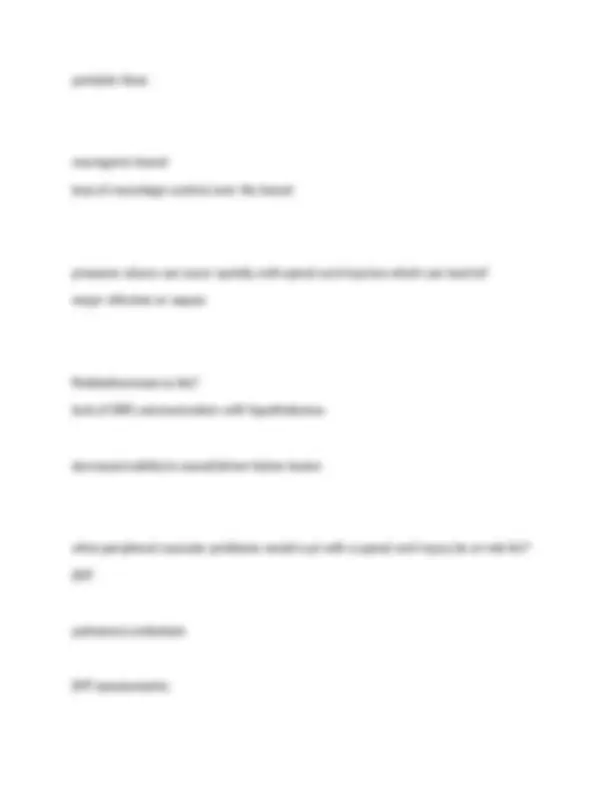
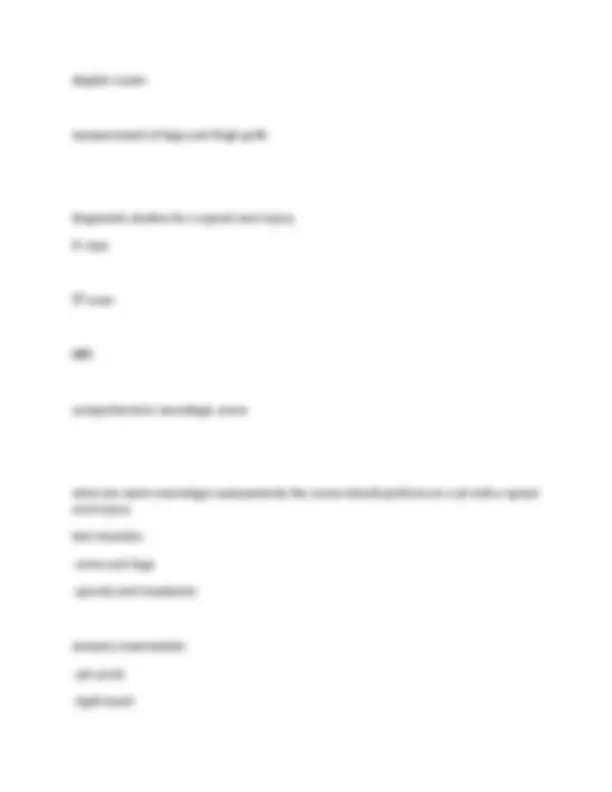
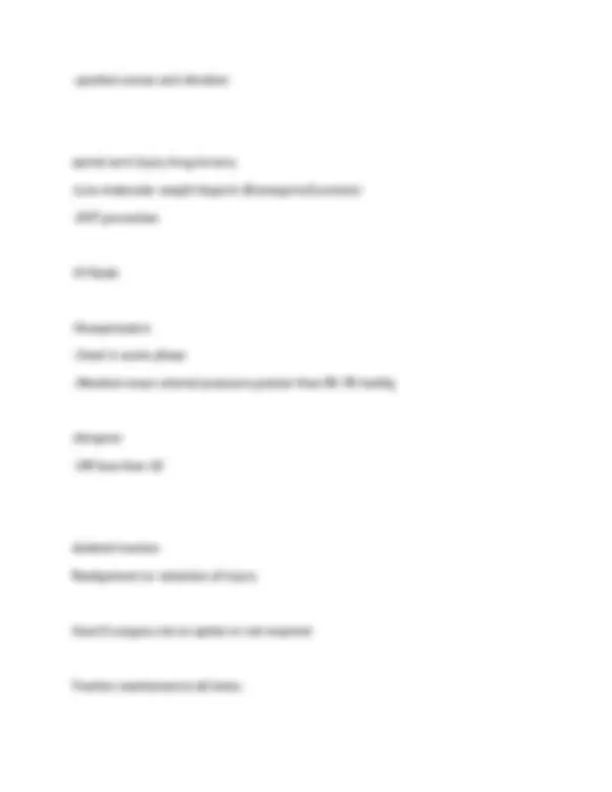
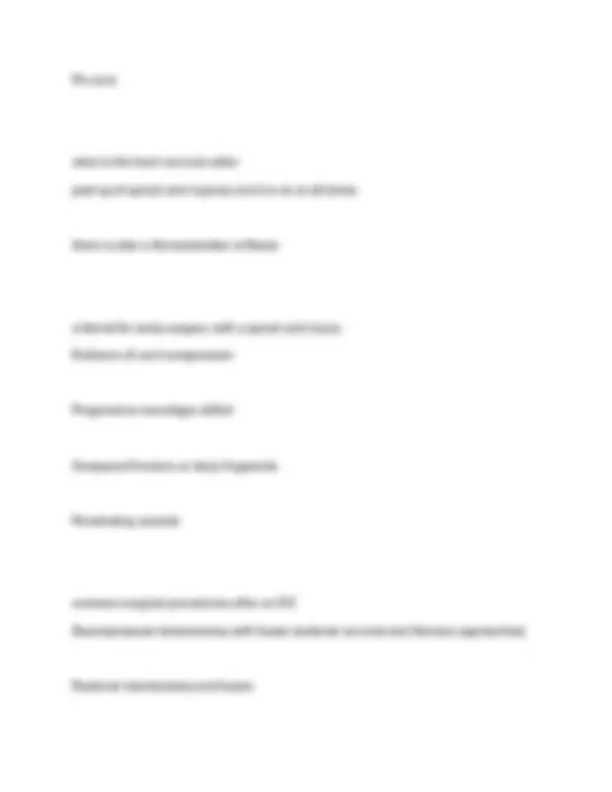
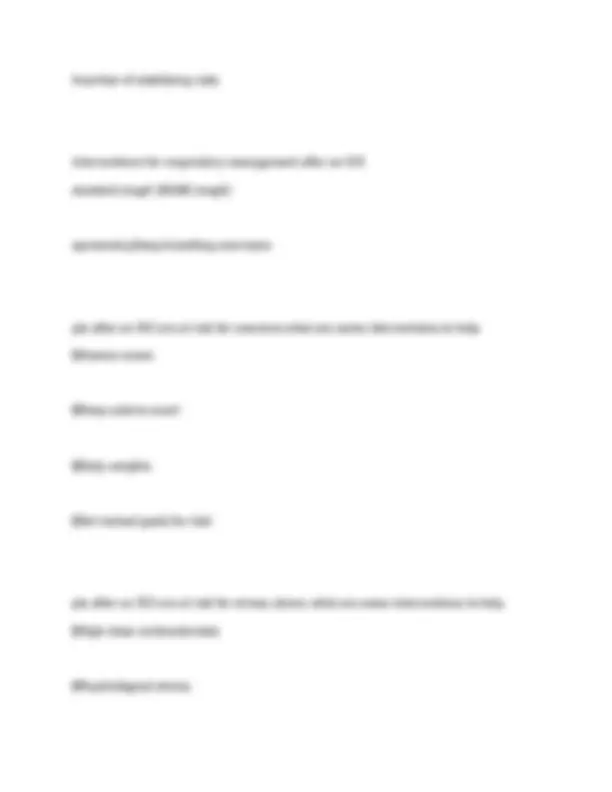
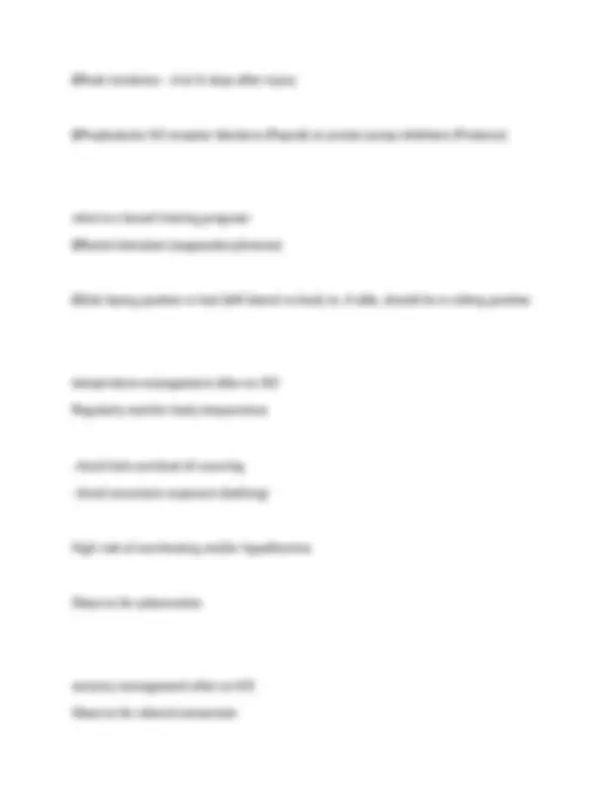
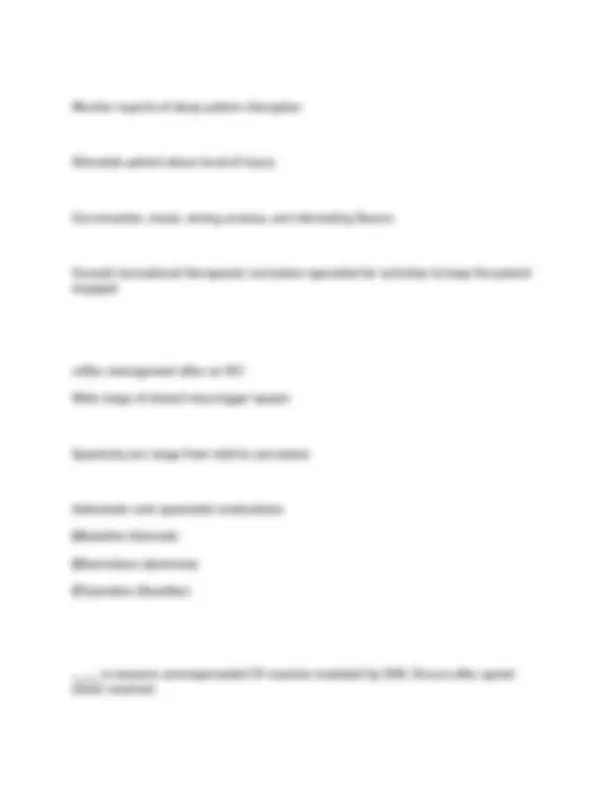

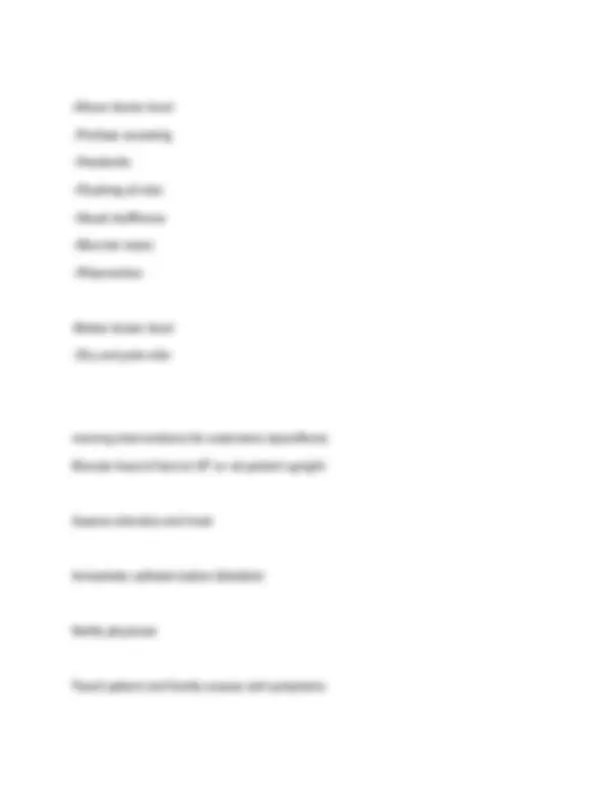
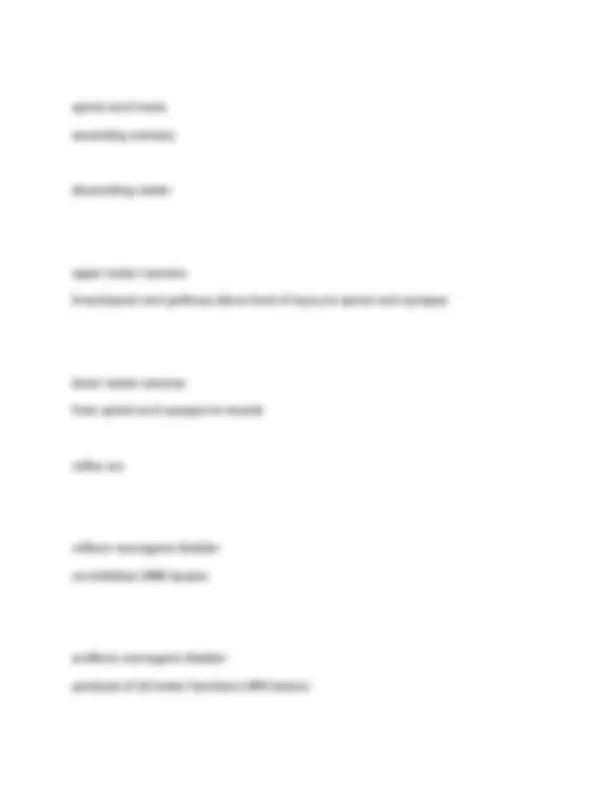
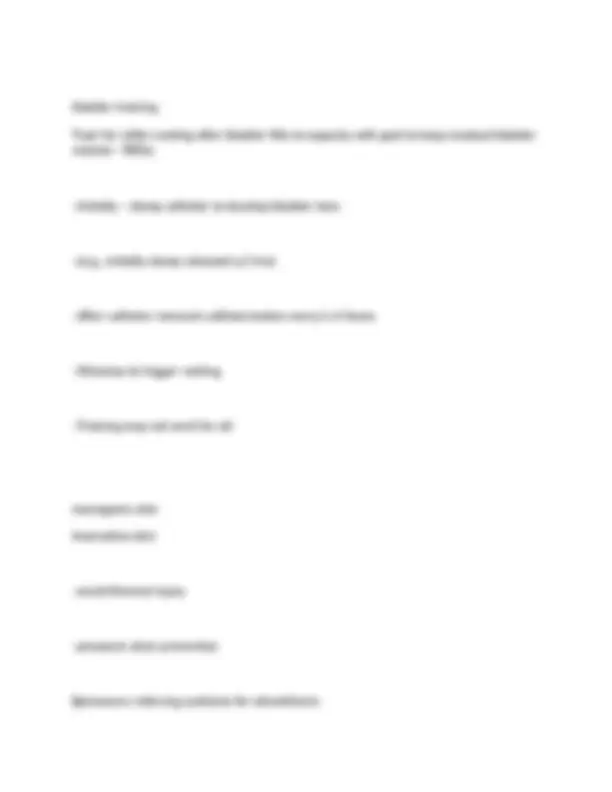
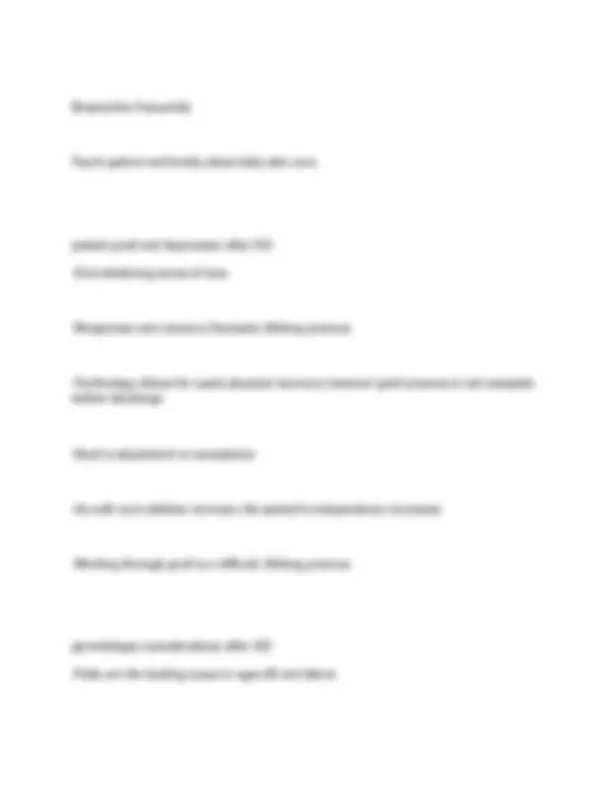
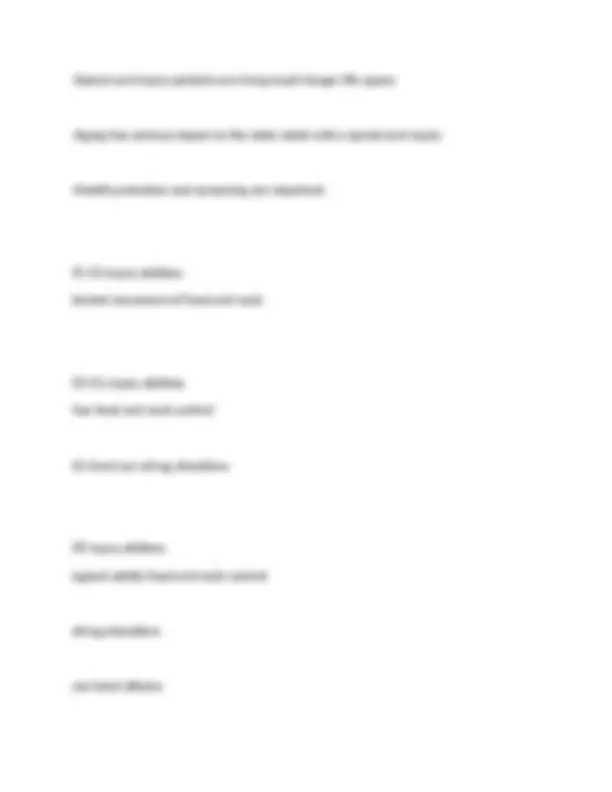
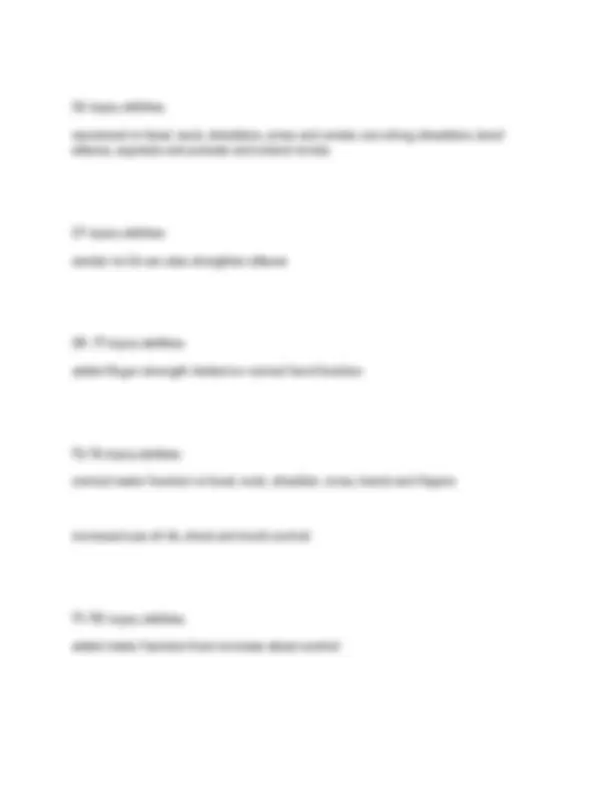
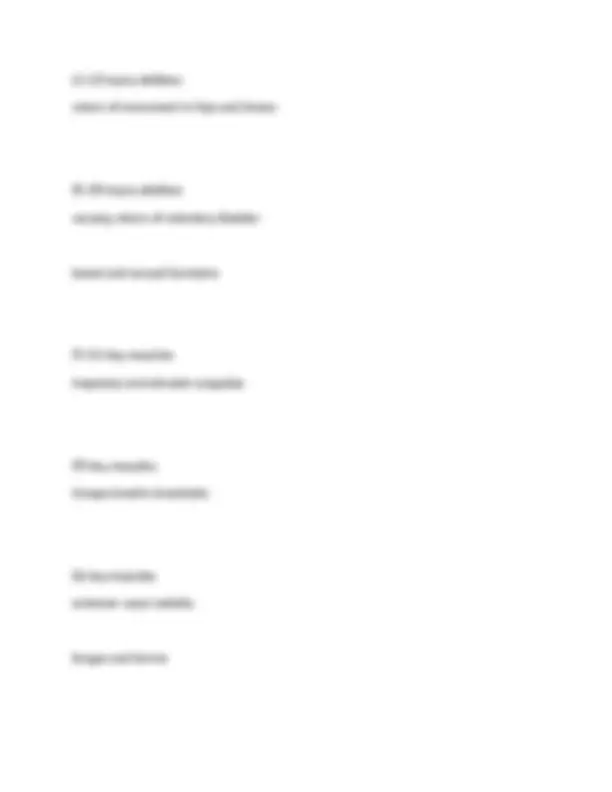


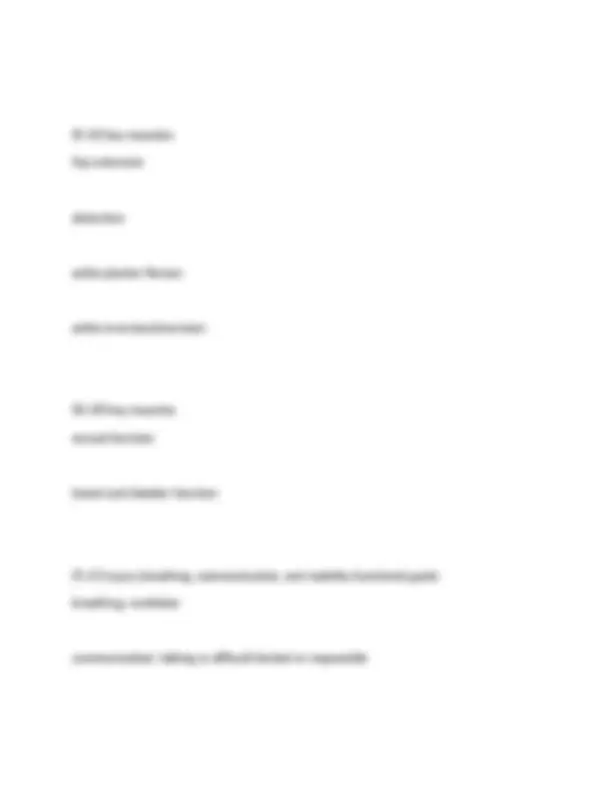
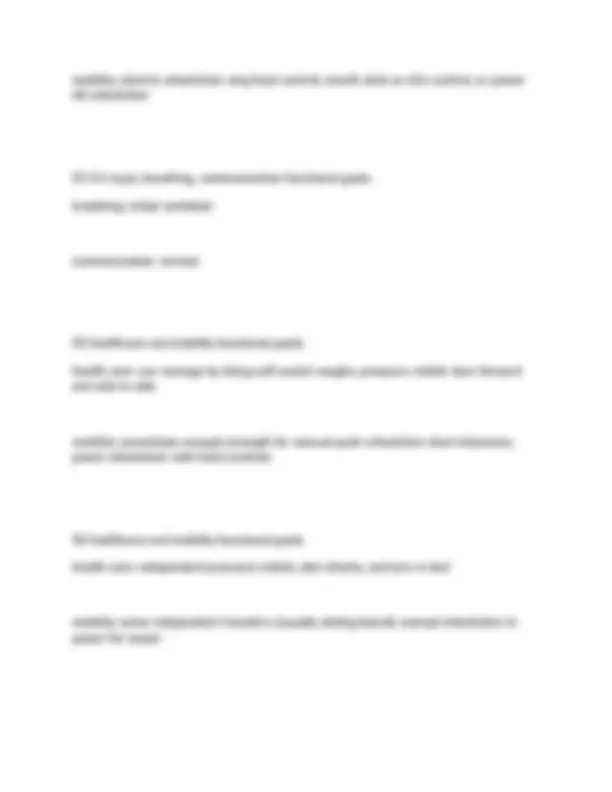
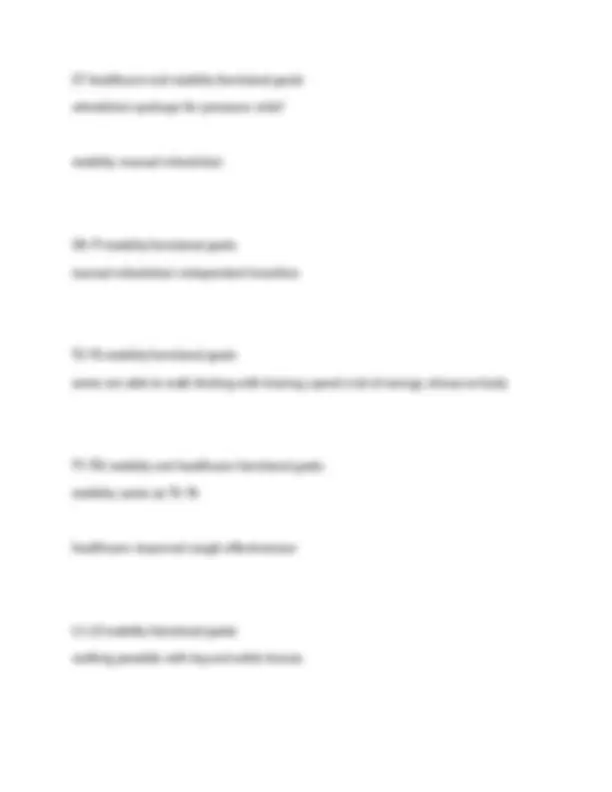
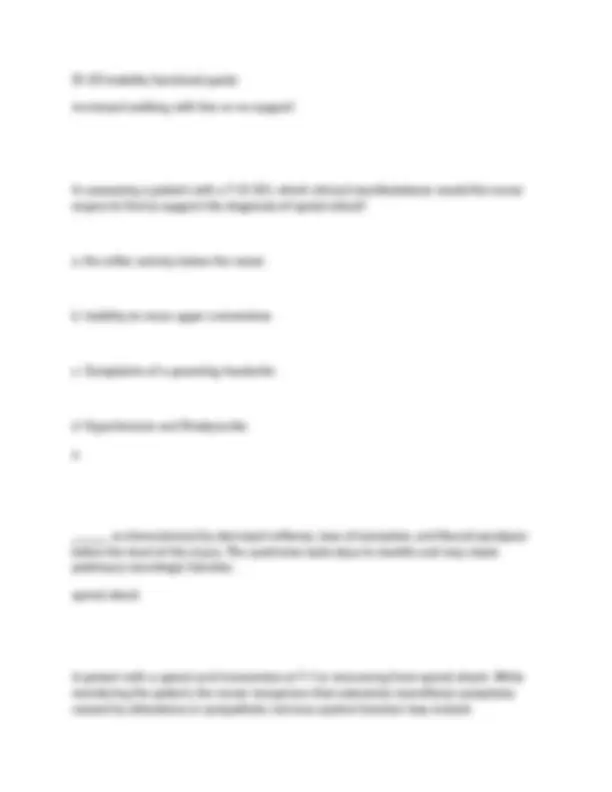

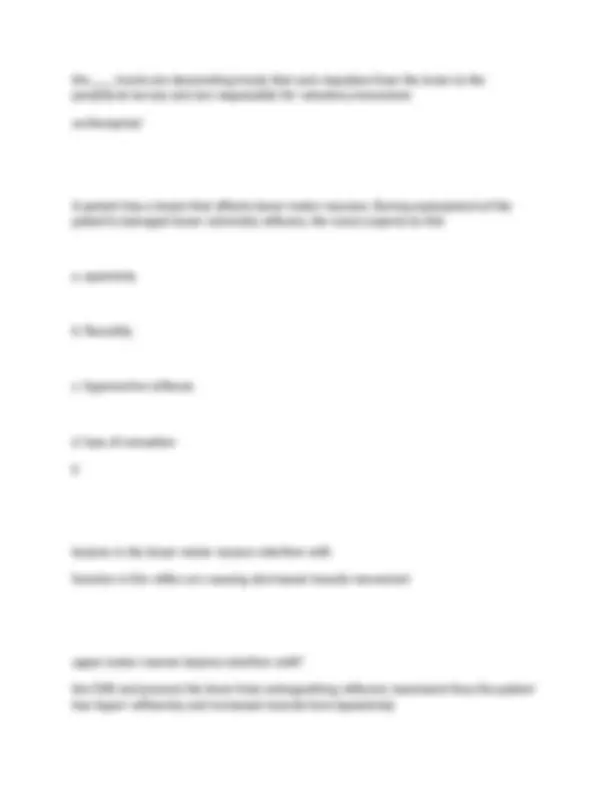
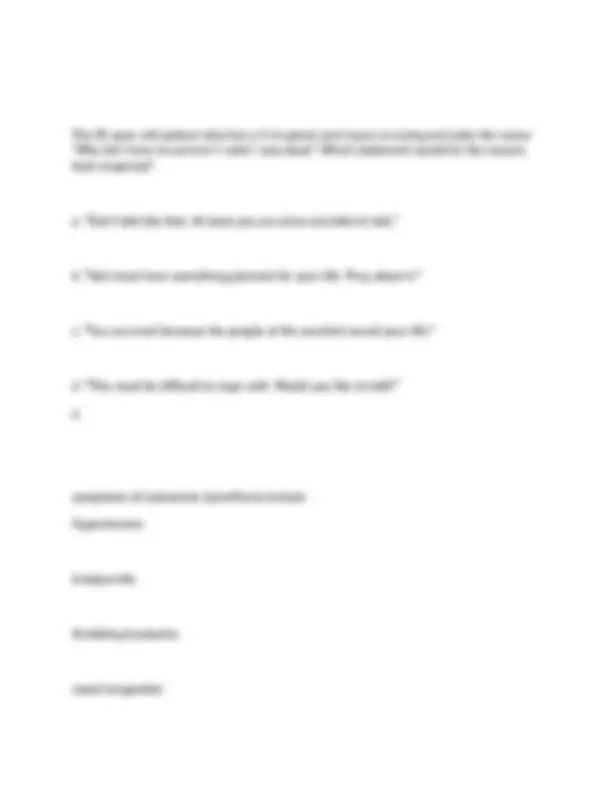
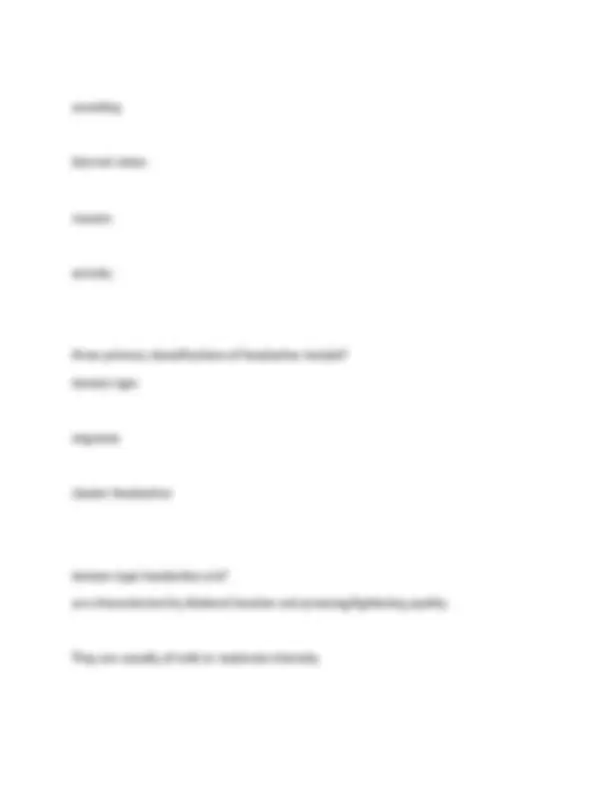
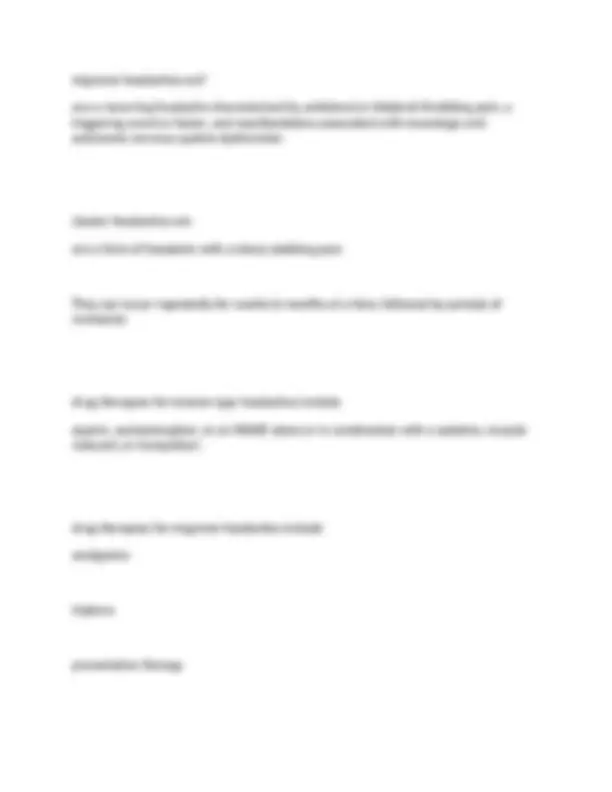
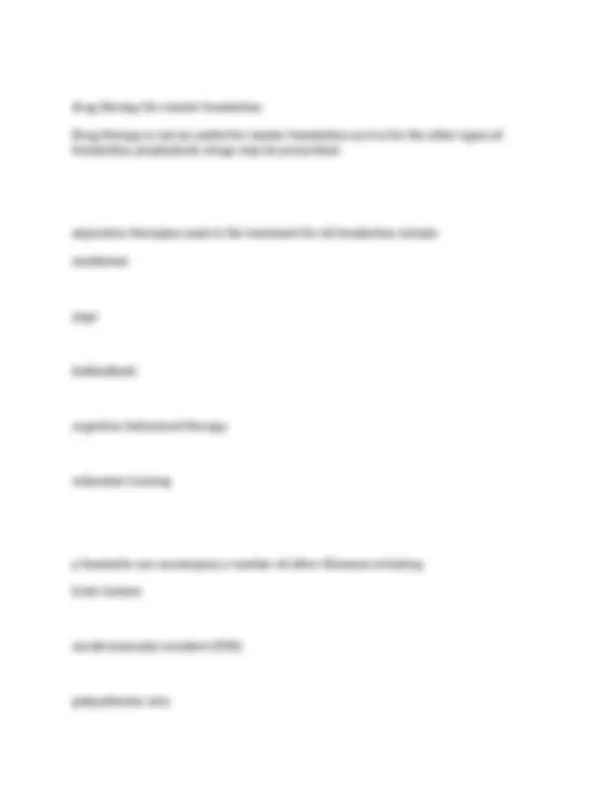
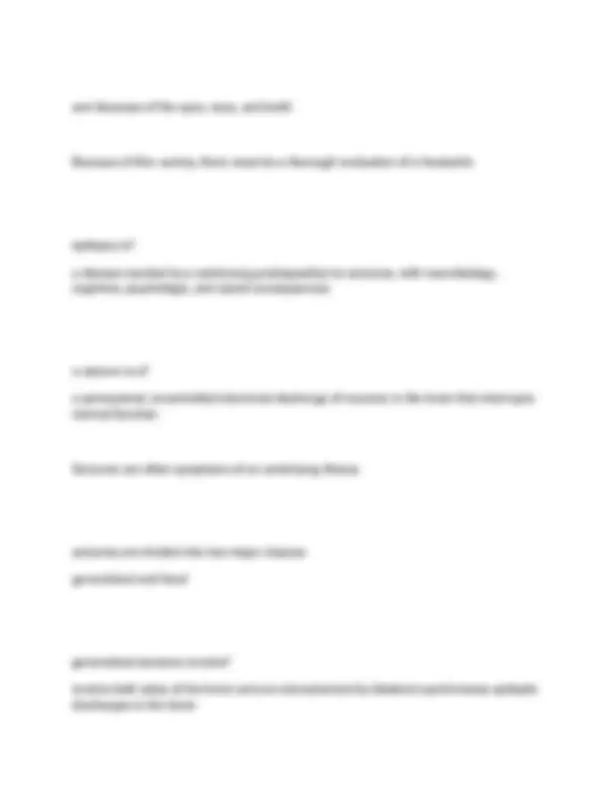
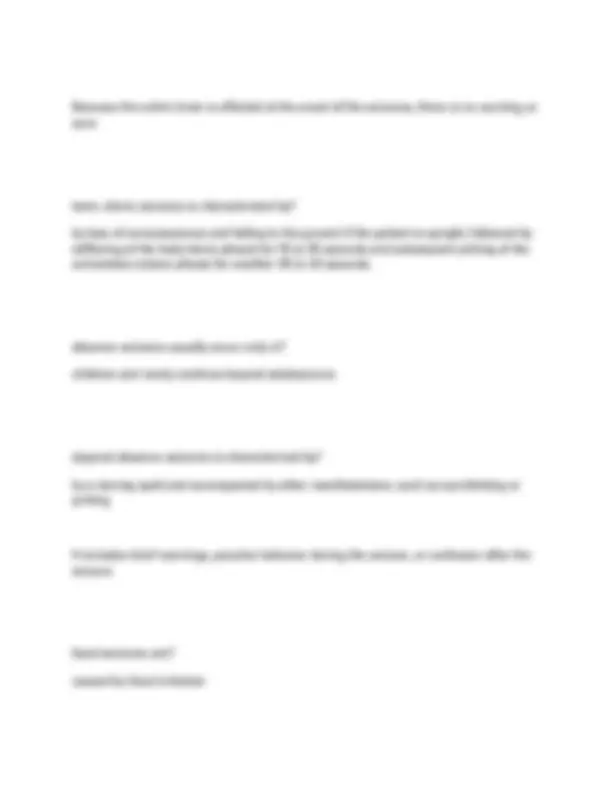
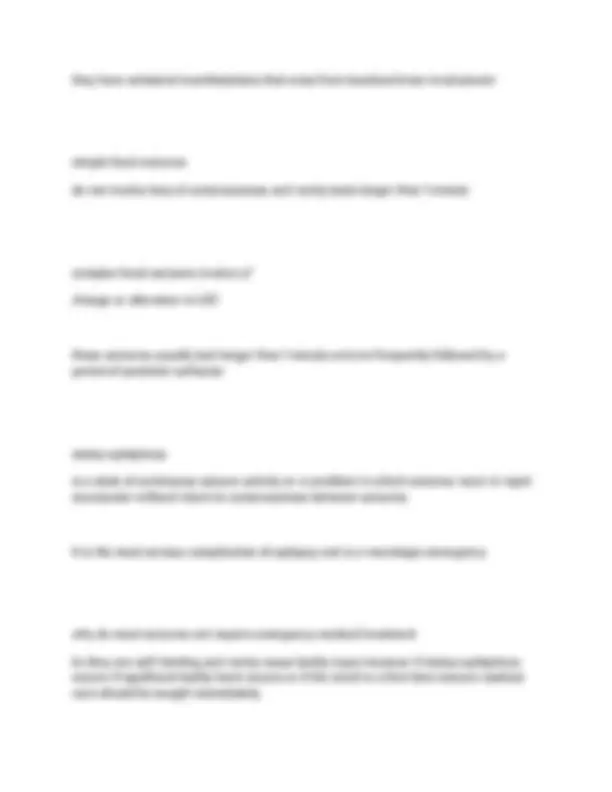
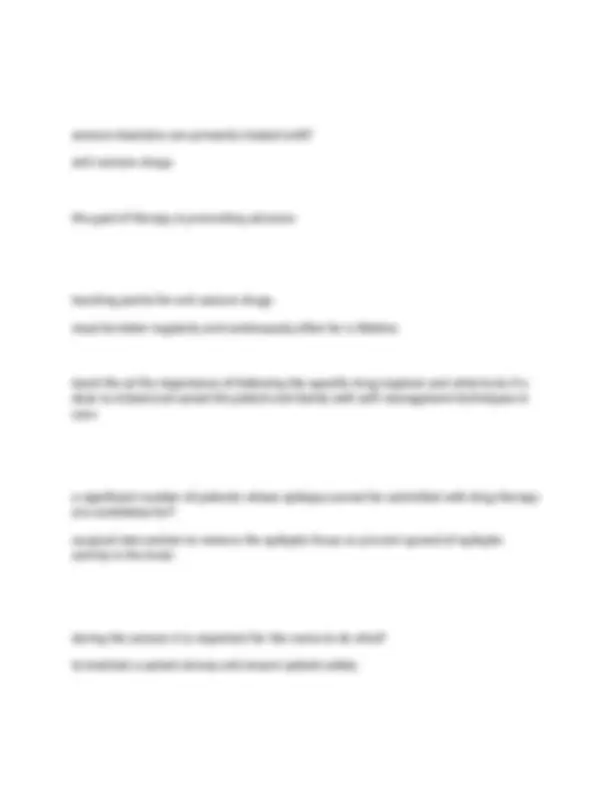
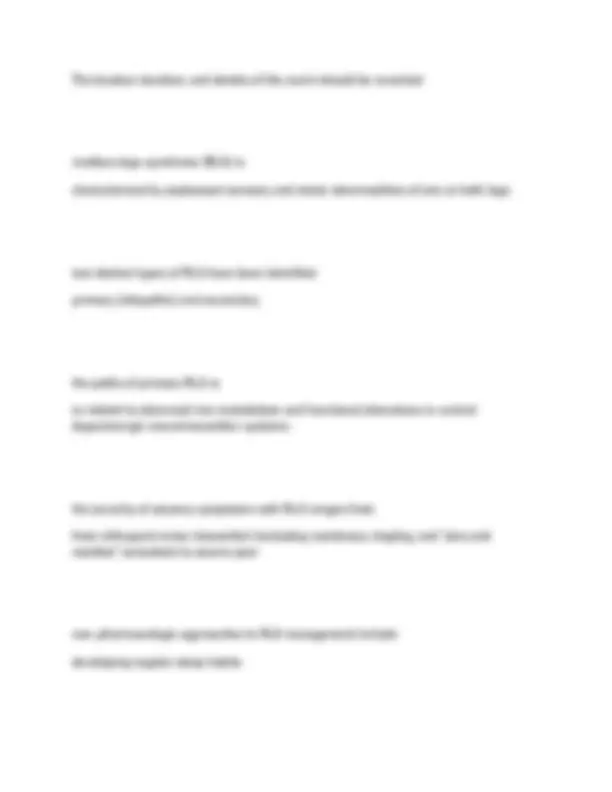
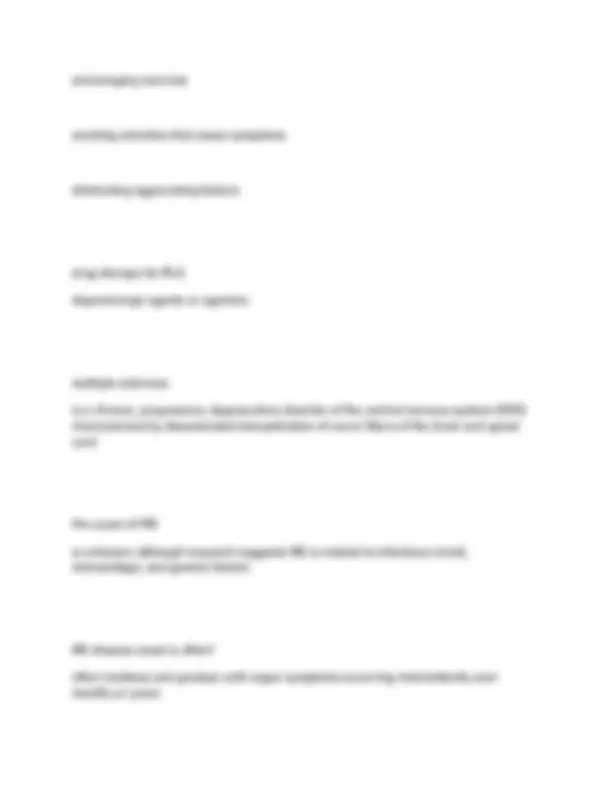
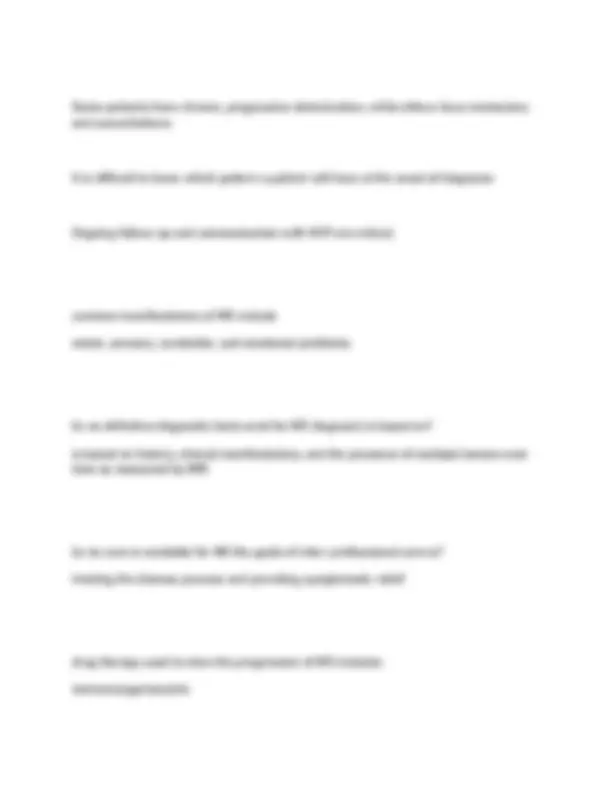
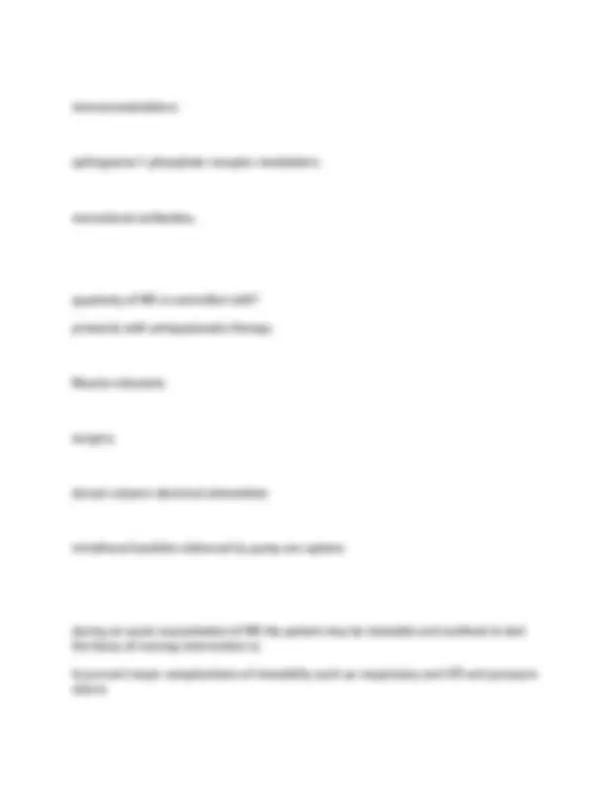
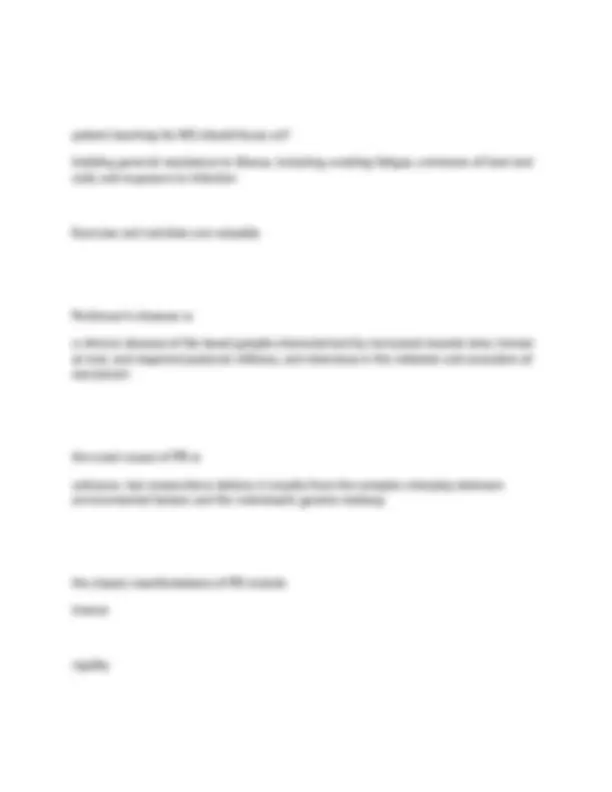
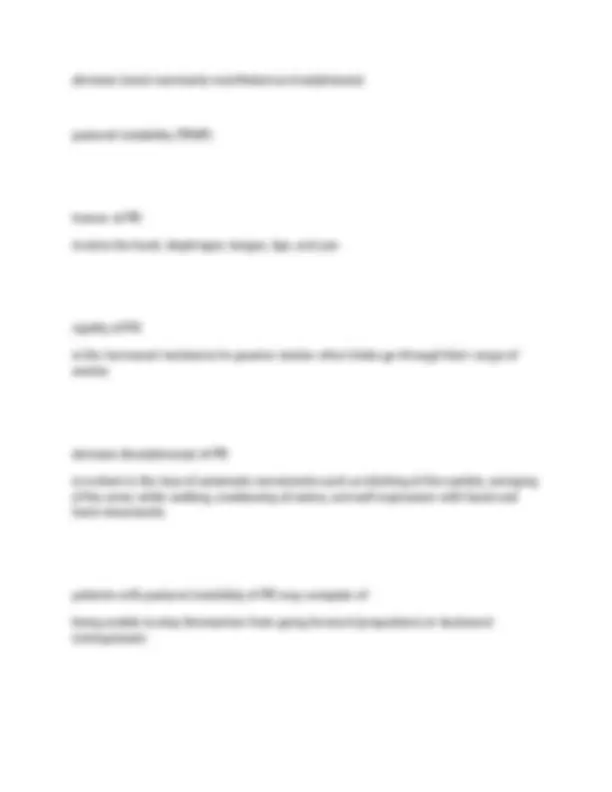
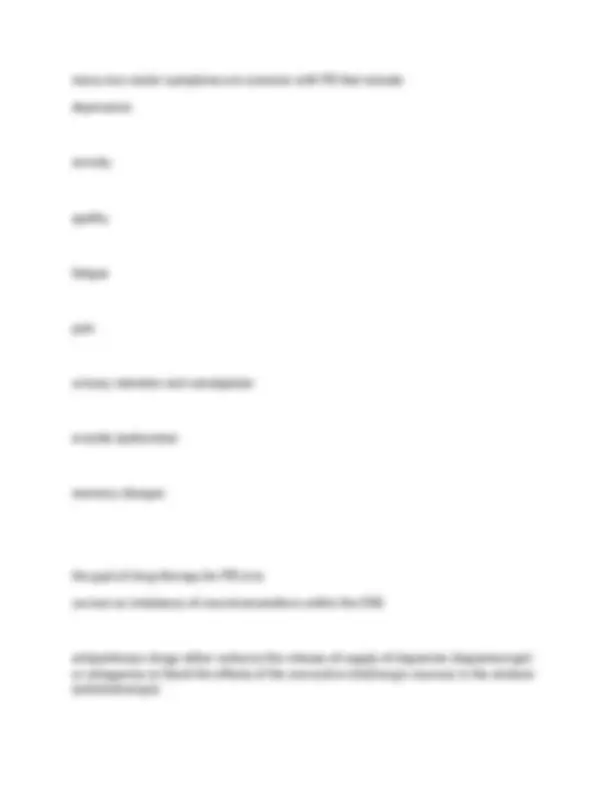
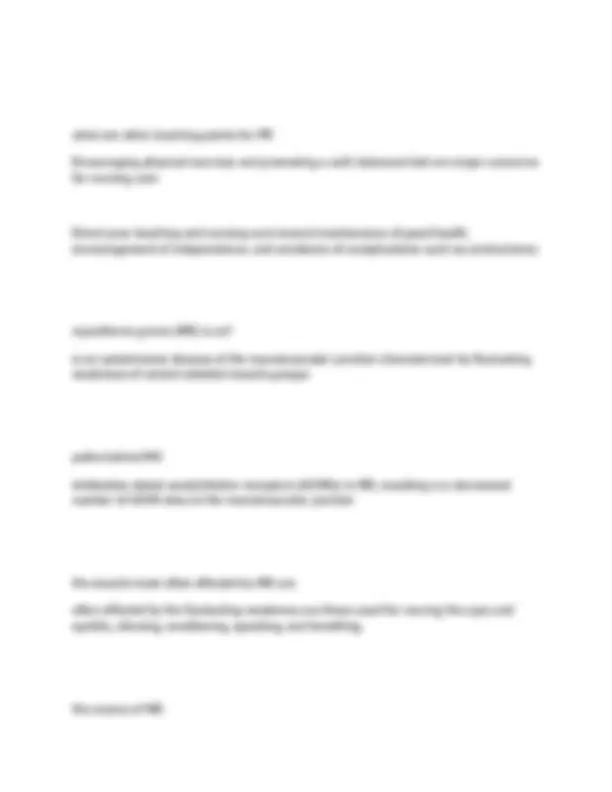
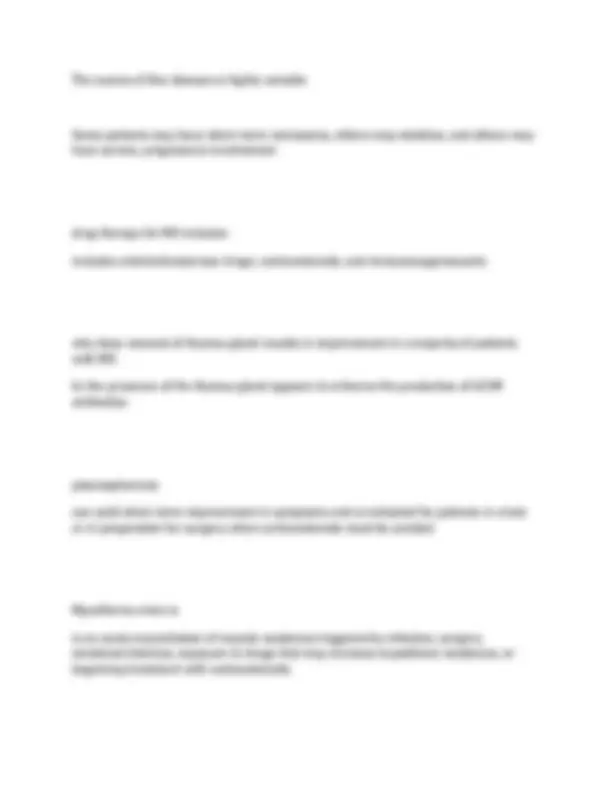
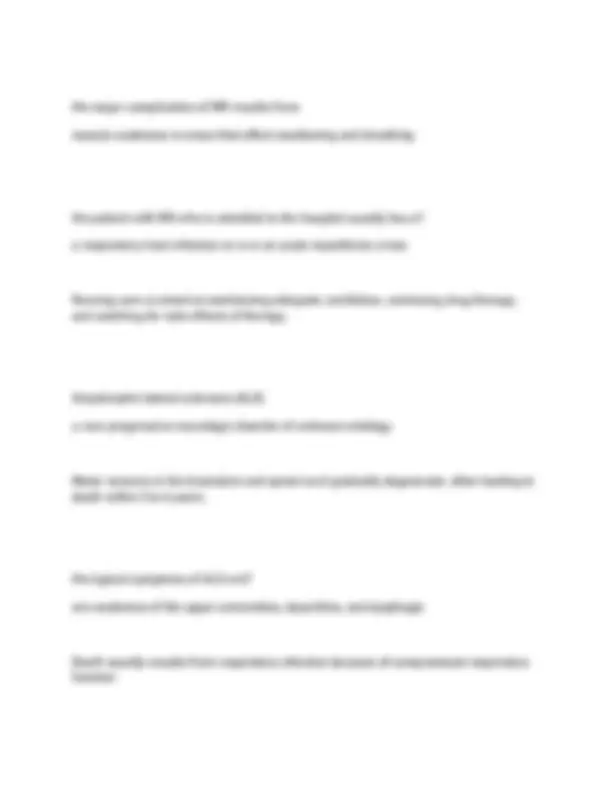
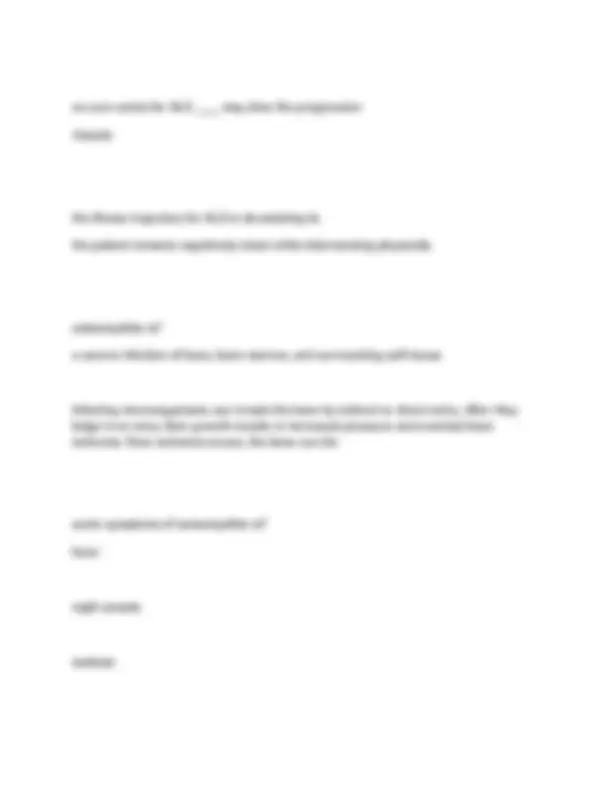
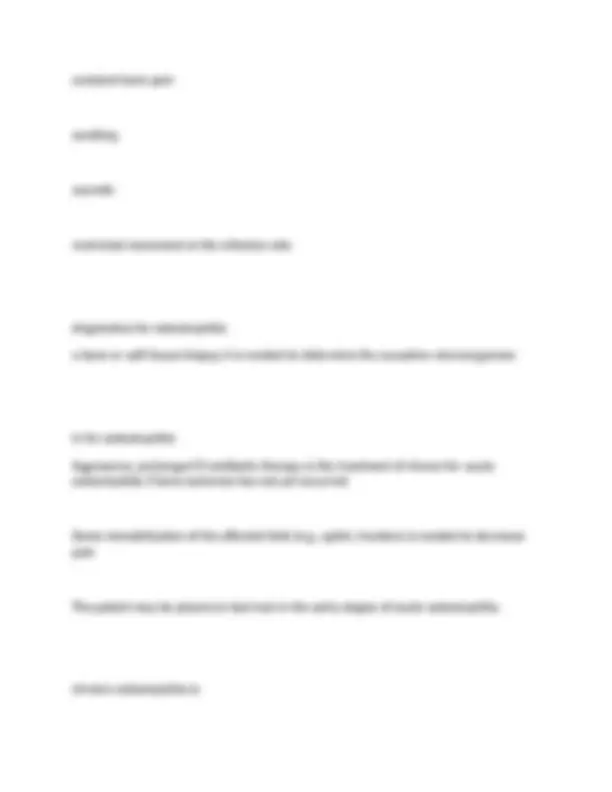
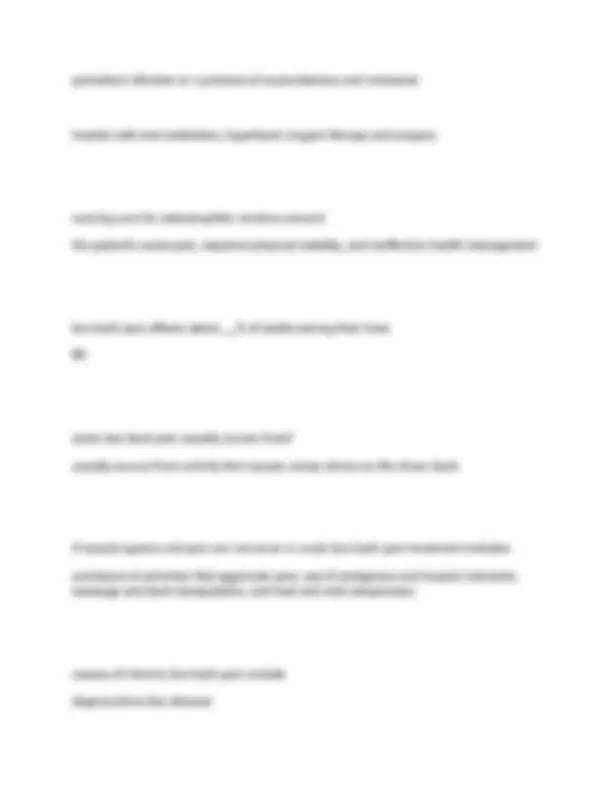

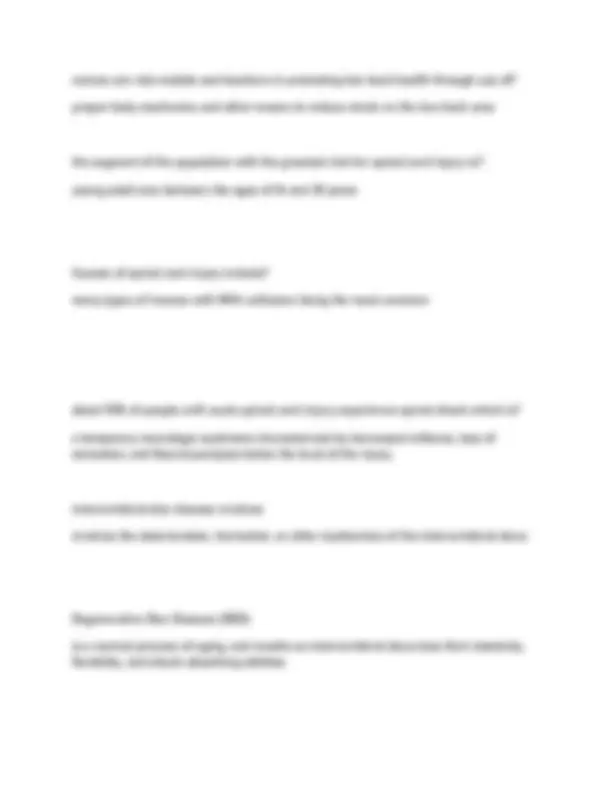
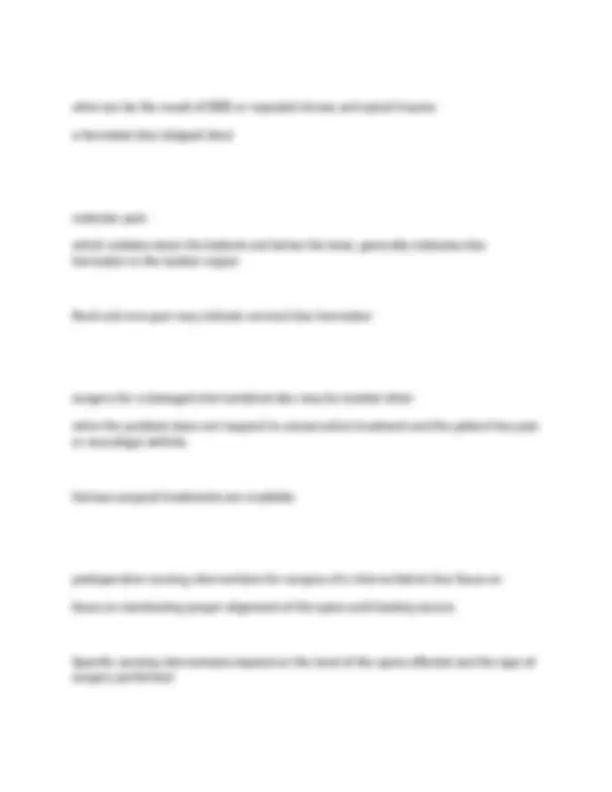
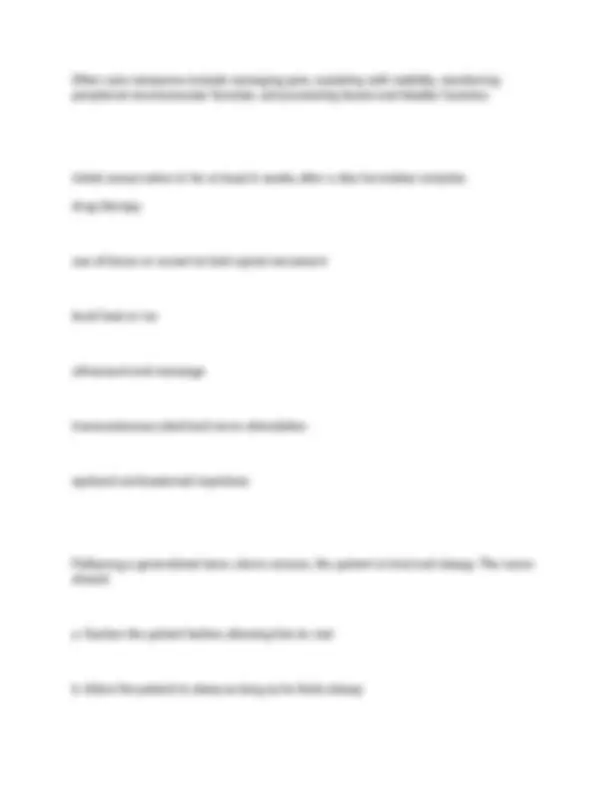
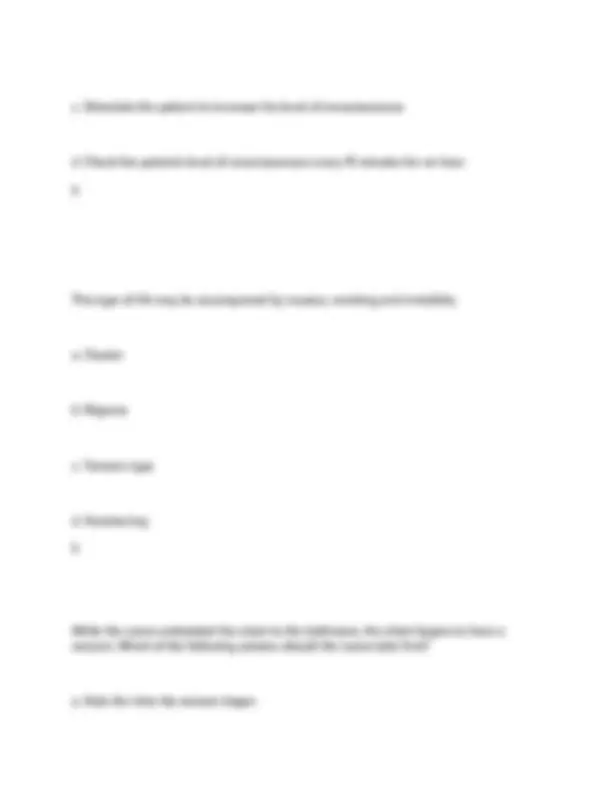
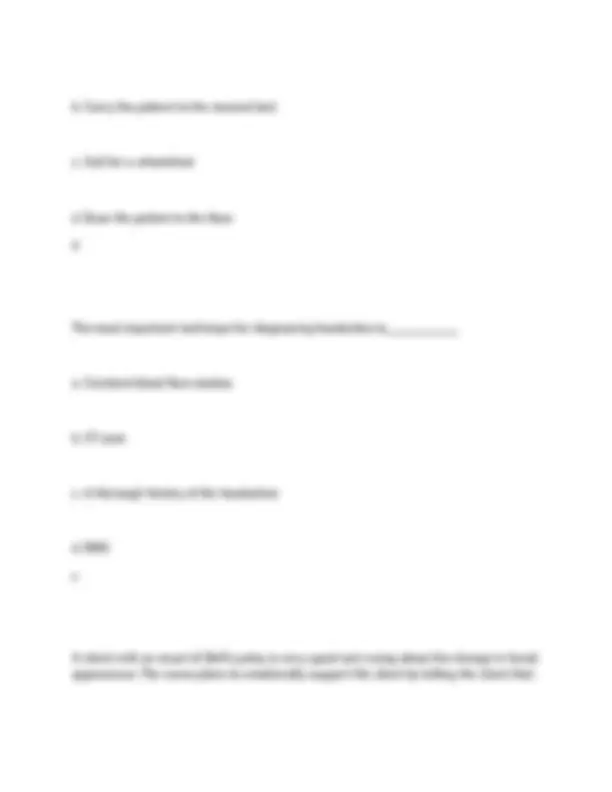
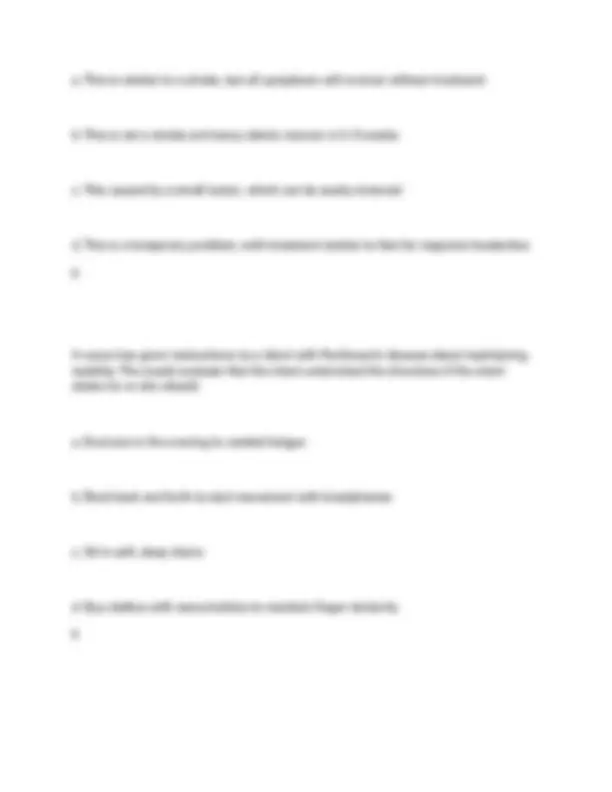
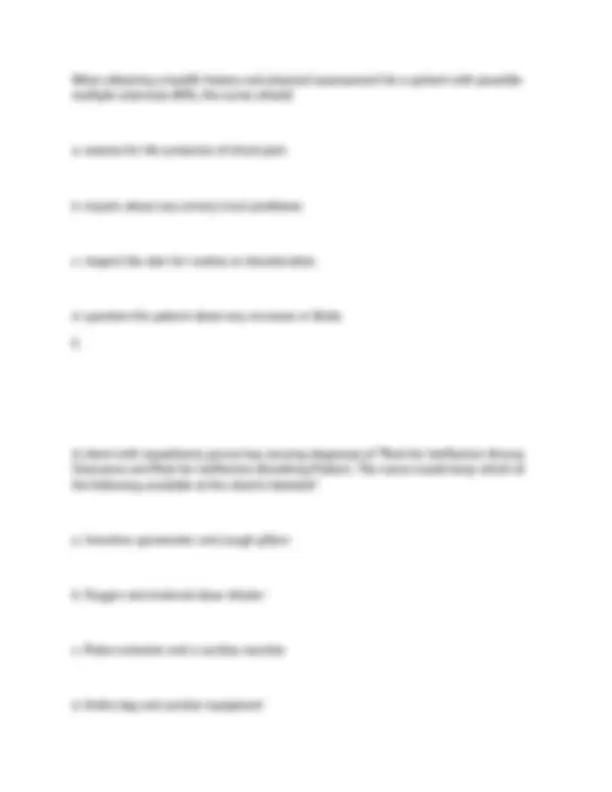
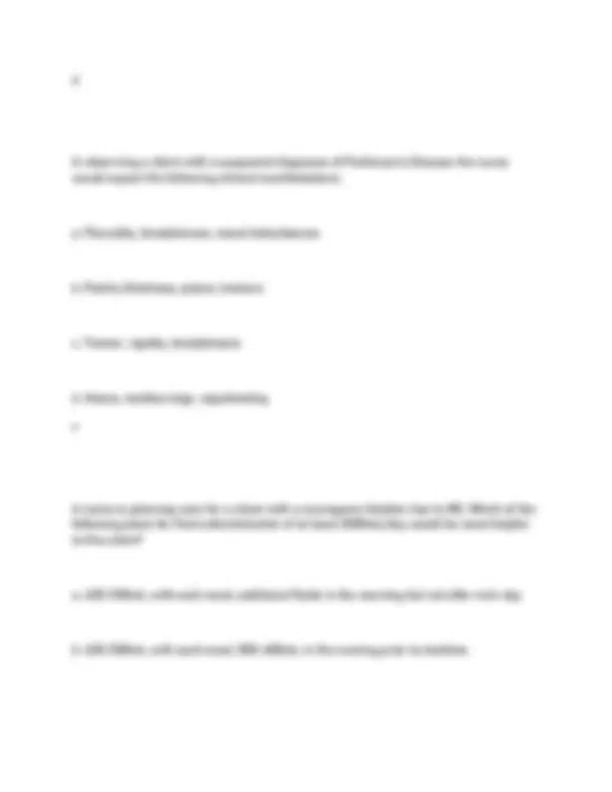
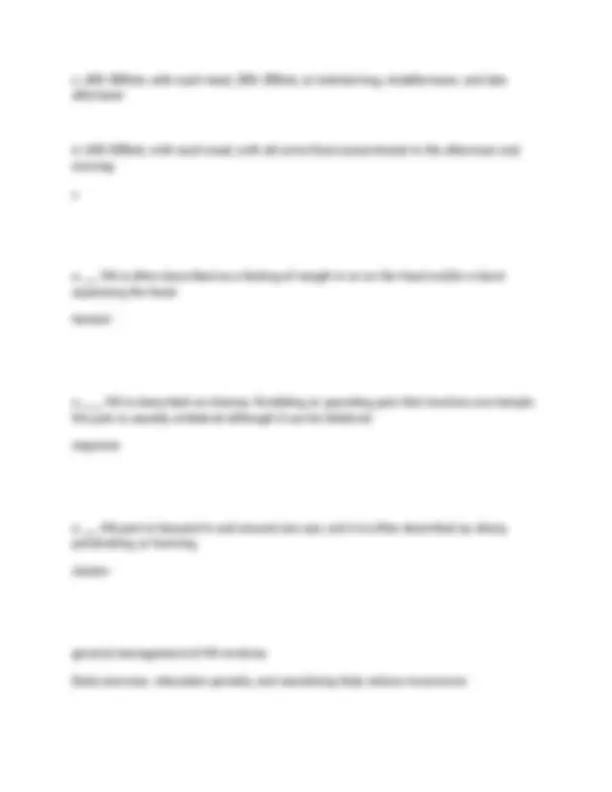
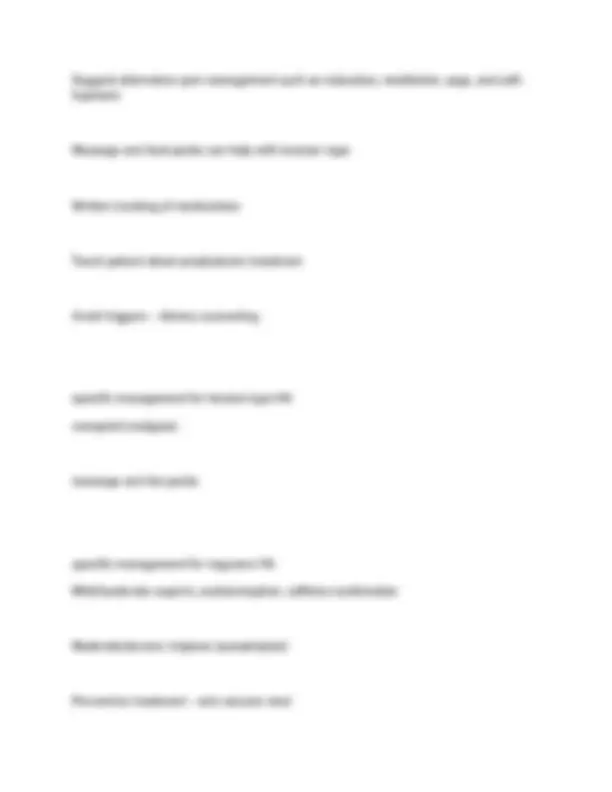
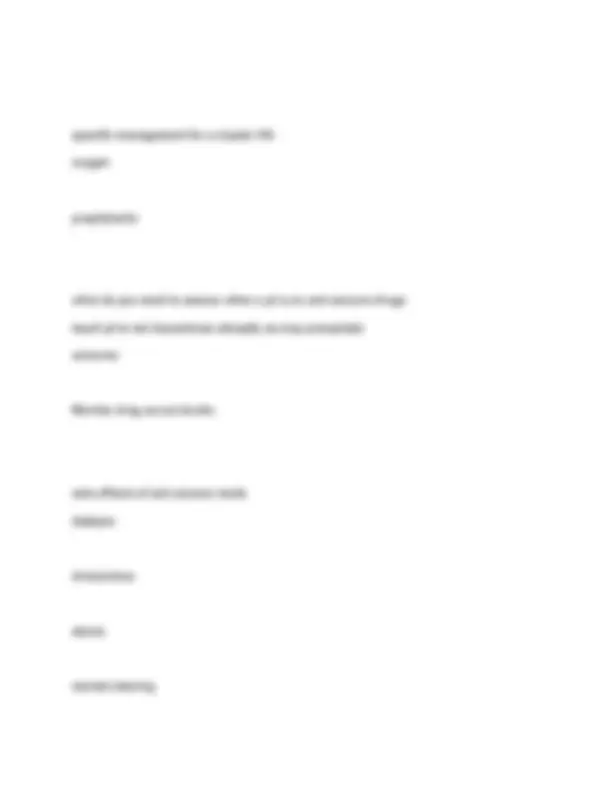

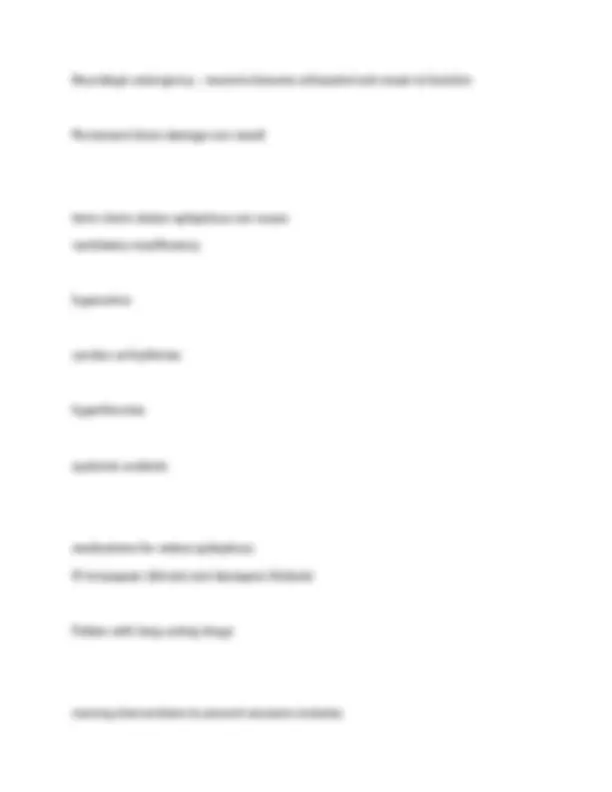
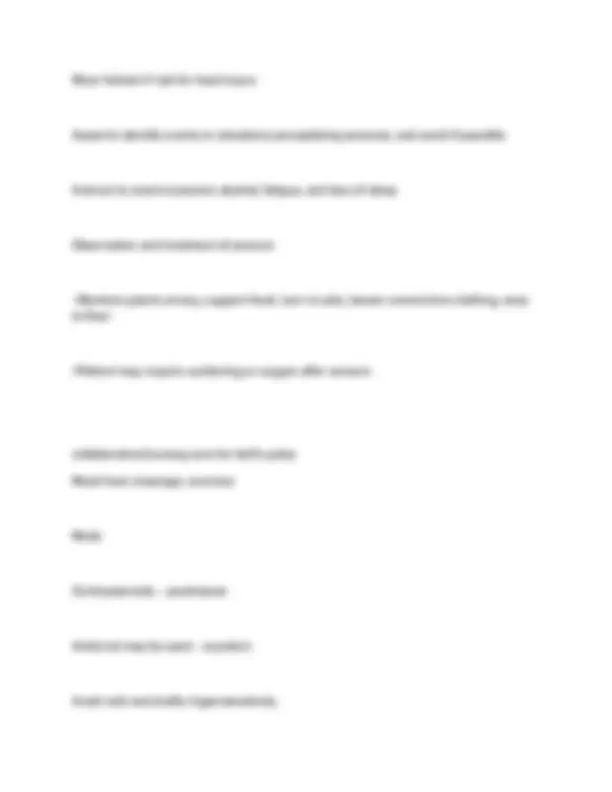

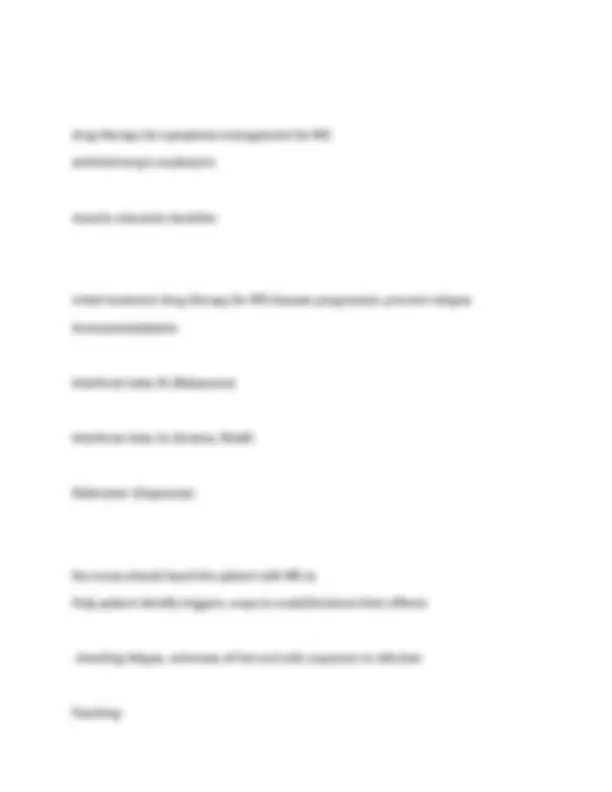
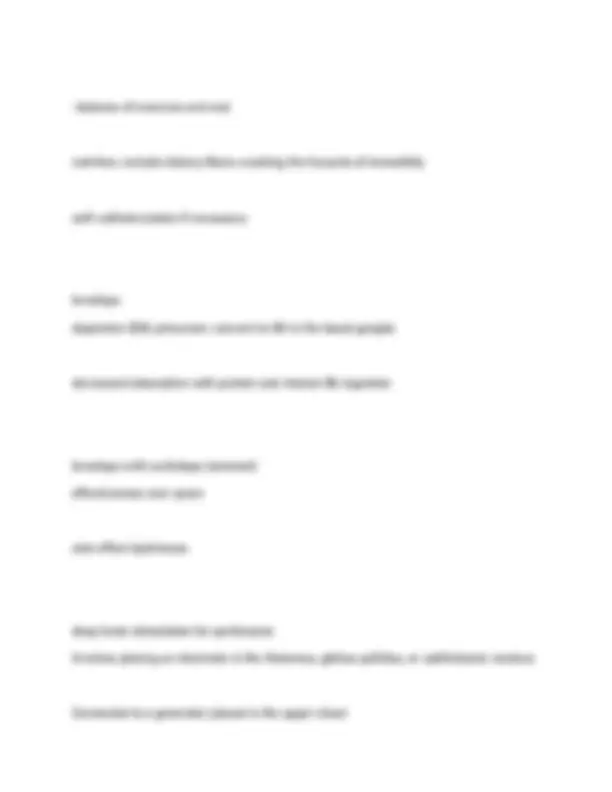
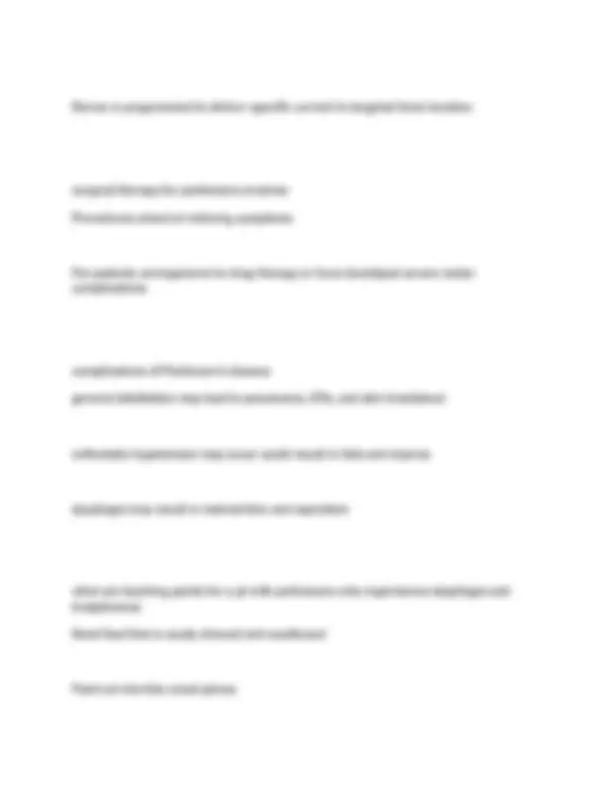
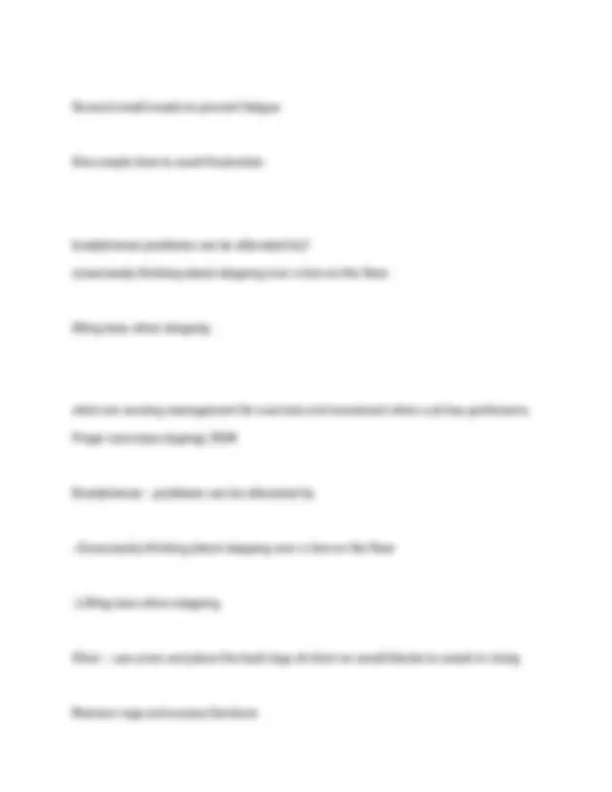
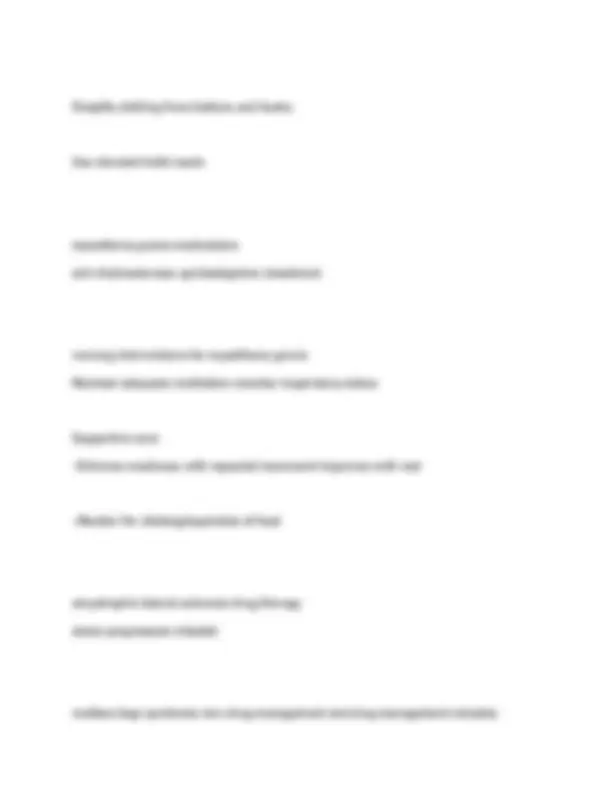
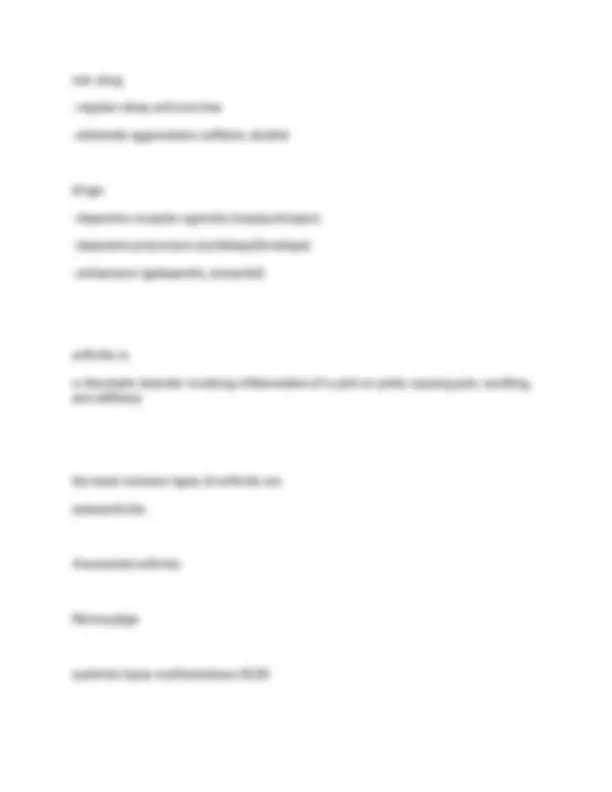
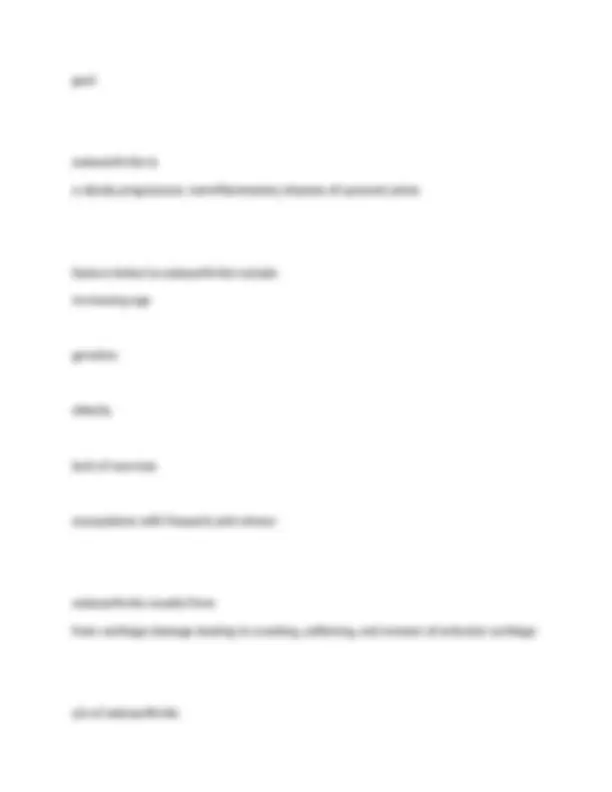
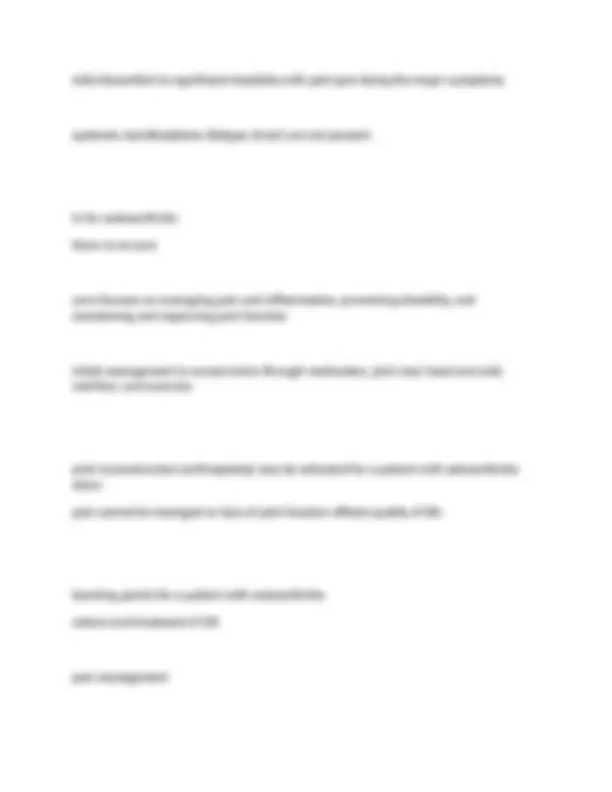
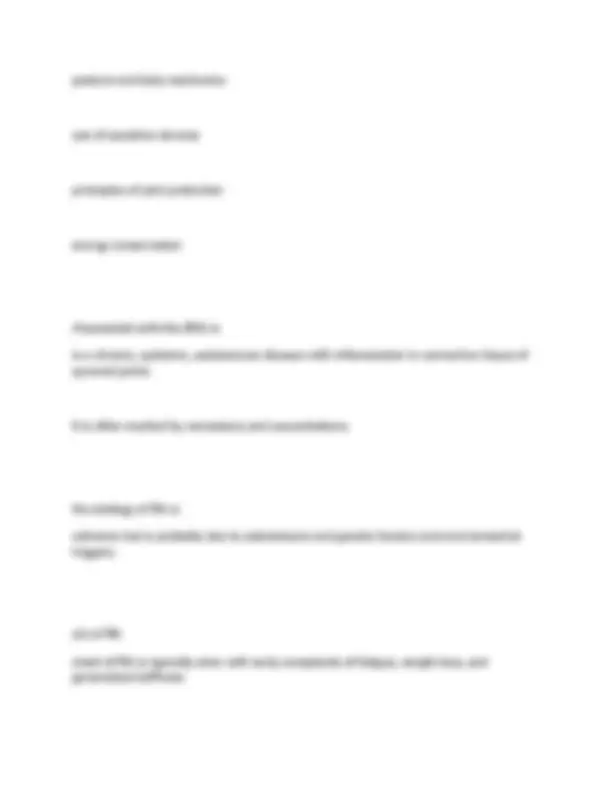
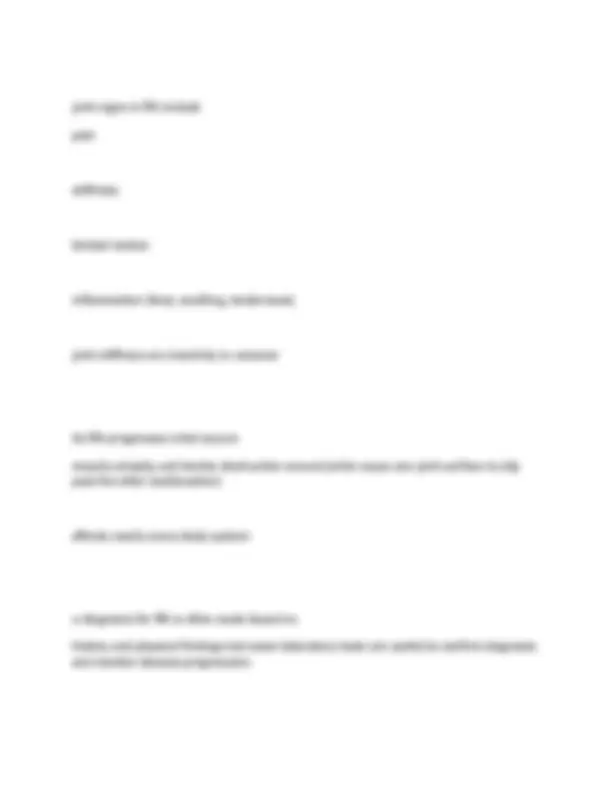
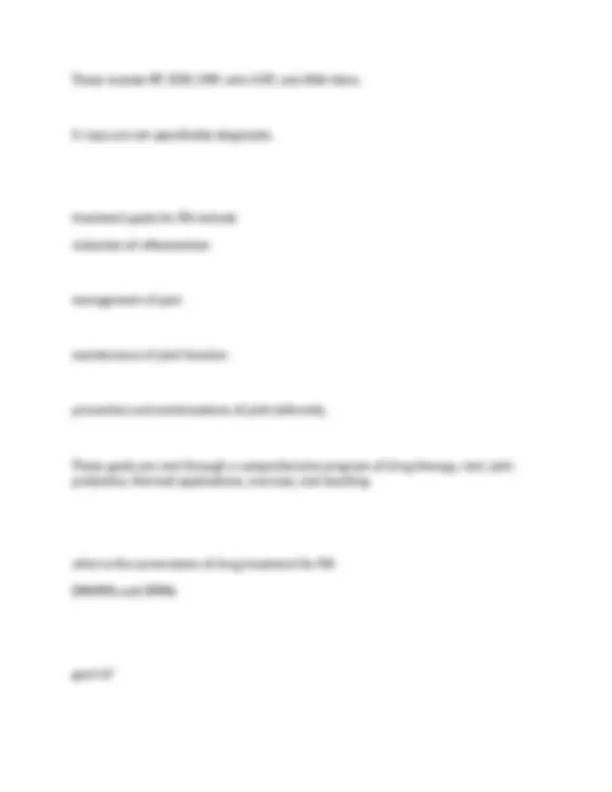
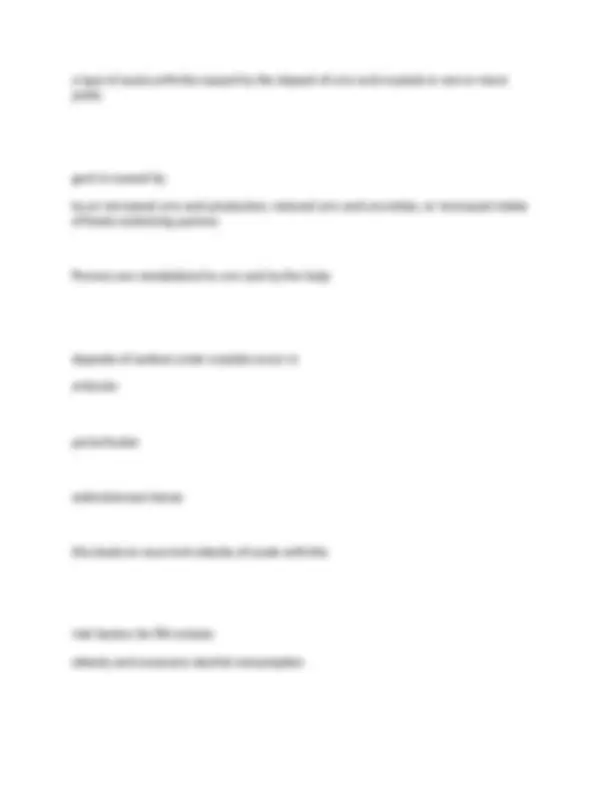
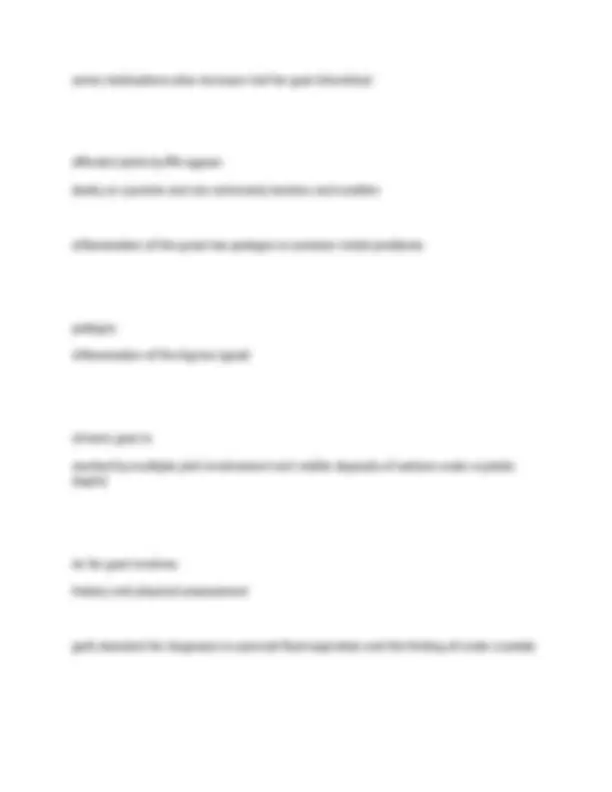
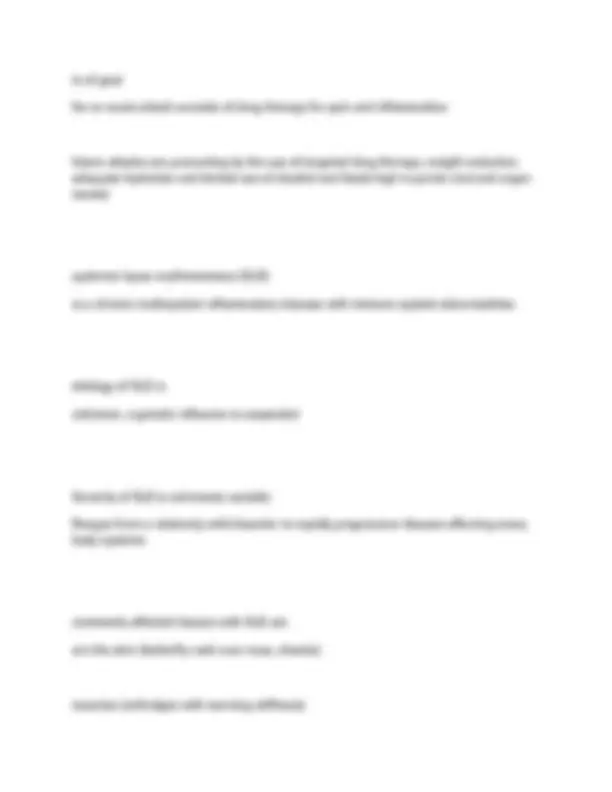
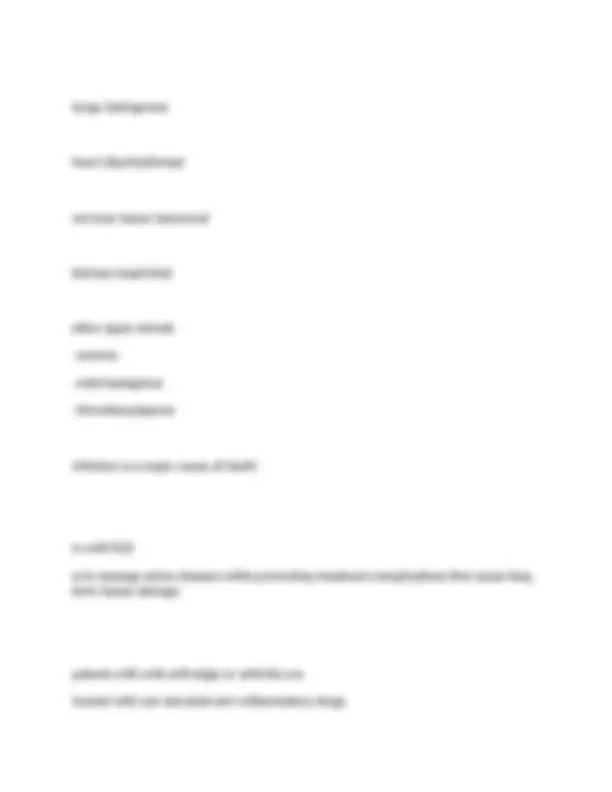
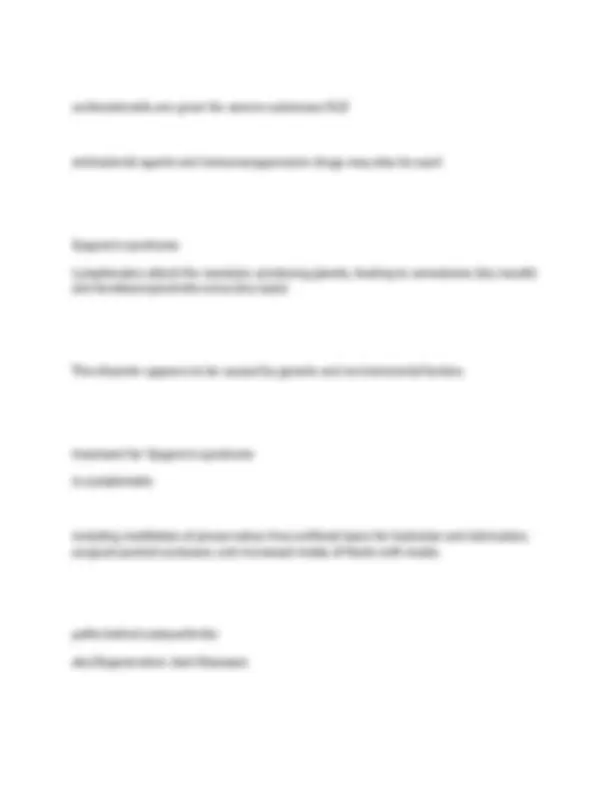



Study with the several resources on Docsity

Earn points by helping other students or get them with a premium plan


Prepare for your exams
Study with the several resources on Docsity

Earn points to download
Earn points by helping other students or get them with a premium plan
Community
Ask the community for help and clear up your study doubts
Discover the best universities in your country according to Docsity users
Free resources
Download our free guides on studying techniques, anxiety management strategies, and thesis advice from Docsity tutors
NURS 6202 Exam 3 2025/2026 Correctly Answered Questions Real Exam A+ Graded-Marquette University
Typology: Exams
1 / 201

This page cannot be seen from the preview
Don't miss anything!





























































































neurogenic shock is? due to the loss of vasomotor tone caused by injury and is characterized by hypotension and bradycardia spinal cord injuries are classified by? the mechanism of injury skeletal and neurologic level of injury completeness or degree of injury the major mechanisms of spinal cord injury are? flexion hyperextension
flexion-rotation extension-rotation compression the degree of a spinal cord involvement may be either? complete or incomplete complete spinal cord involvement results in? total loss of sensory and motor function below the level of the injury incomplete spinal cord involvement results in? in a mixed loss of voluntary motor activity and sensation and leaves some tracts intact distinct syndromes are associated with incomplete spinal cord injuries which include? central cord syndrome anterior cord syndrome
and a relative hypovolemia exists neurogenic bladder is a common development in? acute spinal cord injuries and spinal shock if the cord injury has occurred above the level of ____ the primary GI problems are related to hypo motility. T in the early period after injury when spinal shock is present and for patients with an injury level of ____ or below, the bowel is areflexic and sphincter tone is decreased. T12 or below Poikilothermism the adjustment of the body temperature to the room temperature occurs because the interruption of the SNS prevents peripheral temperature sensations from reaching the hypothalamus immediate post injury spinal problems include
maintaining a patent airway adequate ventilation adequate circulating blood volume and preventing the extension of cord damage (secondary damage) after a patient is stabilized at the spinal cord injury scene what occurs? they are transferred to a medical facility a thorough assessment is done to specifically evaluate the degree of deficit and to establish the level and degree of injury the decision to perform surgery on a patient with a spinal cord injury is recommended when? cord compression or the neurologic disorder progresses high doses of ___ is not recommended for tx of spinal cord injury. methylprednisolone the overall goals for a patient with a spinal cord injury include
any increase in vagal stimulation such as turning or suctioning can result in cardiac arrest the nurse should assess VS frequently during the first 48 to 72 hours after a spinal cord injury the GI tract may stop functioning what is one intervention that may be needed? a nasogastric tube may be inserted if ileus occurs fluid and electrolytes need to be closely monitored once bowel sounds are present or flatus is passed oral food and fluids can gradually be introduced if the swallowing reflex is intact a bowel program should be started during the acute phase what is the recommended diet for a pt with spinal cord injury bc of the severe catabolism a high protein high calorie diet is necessary for energy and tissue repair immediately after a spinal cord injury urine is retained because of?
the loss of autonomic and reflex control of the bladder and sphincter over distention of the bladder can result in? reflux into the kidneys with eventual renal failure the nurse should provide measures to prevent UTI why should the nurse ensure the temperature environment is appropriate for a patient after a spinal cord injury bc there is no vasoconstriction, piloerection, or heat loss through perspiration below the level of injury what are some nursing interventions to compensate for the patients absent sensation after a spinal cord injury to prevent sensory deprivation the nurse should stimulate the patient above the level of injury conversation, music, interesting foods the return of reflexes after the resolution of spinal shock means that the patient with an injury level at T6 or higher may develop a life threatening condition known as? autonomic hyperreflexia
an increasing number of ___ adults are living with a chronic spinal cord injury. chronic older adults are experiencing more spinal injuries they are at greater risk for complications Trigeminal neuralgia is a relatively uncommon cranial nerve disorder the sensory or afferent branches, primarily the maxillary and mandibular branches are involved the trigeminal nerve (CN V) has both motor and sensory branches the classic feature of trigeminal neuralgia is? an abrupt onset of paroxysms of excruciating pain described as a burning, knifelike, or lightning like shock in the lips, upper or lower gums, cheek, forehead, or side of the nose intense pain, twitching, grimacing, and frequent blinking and tearing of the eye occur during the acute attack
painful episode of trigeminal neuralgia occur when? a triggering mechanism of light touch at a specific point (trigger zone) along the distribution of the nerve branches although trigeminal neuralgia is considered benign pain intensity and disruption of lifestyle can result in? physical and psychological dysfunction or even suicide medication tx for trigeminal neuralgia involves anti seizure drugs such as carbamazepine nerve blocking with local anesthetics surgical therapy is available the overall nursing goals for a pt with trigeminal neuralgia involves will be free of pain maintain adequate nutritional and oral hygiene status
hearing deficit paralysis of the motor branches of the facial nerve typically results in flaccidity of the affected side of the face, with drooping of the mouth accompanied by drooling methods of tx for Bell's palsy includes moist heat pain management electrical stimulation of the nerve prescribed exercises. Bell's palsy is considered benign with full recovery after 3 to 6 months in most patients, especially if treatment is instituted immediately. the overall nursing goals for a pt with Bell's palsy includes? will be pain free or have pain managed
maintain adequate nutritional status maintain appropriate oral hygiene not experience injury to the eye return to normal or previous perception of body image be optimistic about disease outcome. Guillain-Barre syndrome is an acute, rapidly progressing, and potentially fatal form of polyneuropathy. It affects the peripheral nervous system and results in loss of myelin and edema and inflammation of the affected nerves, causing a loss of neurotransmission to the periphery. Etiology of Guillain-Barre Syndrome is believed to be an immunologic reaction directed at the peripheral nerves. It is often preceded by upper respiratory or gastrointestinal infection.
average age at injury 43 primary injury-cord compression by? Bone displaced Blood supply interrupted Traction-pulling on cord Tearing/Transection-penetrating trauma Neurogenic shock lasts up to 6 weeks peripheral vasodilation
lasts days to month characterized by changes below the level of injury
s/s of anterior cord syndrome motor-paralysis sensory-loss of pain, temperature sensation Brown-Sequard syndrome damage to one half of spinal cord s/s of brown-sequard syndrome
s/s of conus medullaris syndrome motor-function lower extremities may be altered sensory-loss in perianal area areflexic bowel and bladder s/s of cauda equina syndrome asymmetric lower extremity weakness patchy sensation lower extremities saddle anesthesia bladder and bowel dysfunction pain-severe, radicular, asymmetric ASIA Impairment Scale American Spinal Injury Association